本期为大家推介的内容为论文《Urban modeling for streets using vector cellular automata: Framework and its application in Beijing》。
长期以来,区域,单元和地块一直被视为城市建模中的主要分析单位。但是,仅有限的对街道级城市建模给予了关注。本文以街道作为城市模型的空间单元,提出了一种基于元胞自动机的建模概念框架。通过对2014年至2018年北京第五环路内城市空间的经验应用,验证了所提出框架的有效性。概念框架和实证应用也提供了基于线性公共空间和大数据集成的城市规划和设计支持。

题目:《Urban modeling for streets using vector cellular automata: Framework and its application in Beijing》
作者:贾紫牧、陈龙、陈婧佳、吕国玮、周鼎、龙瀛
URL : https://doi.org/10.1177/2399808320942777(复制搜索可下载查看)
发表刊物:《
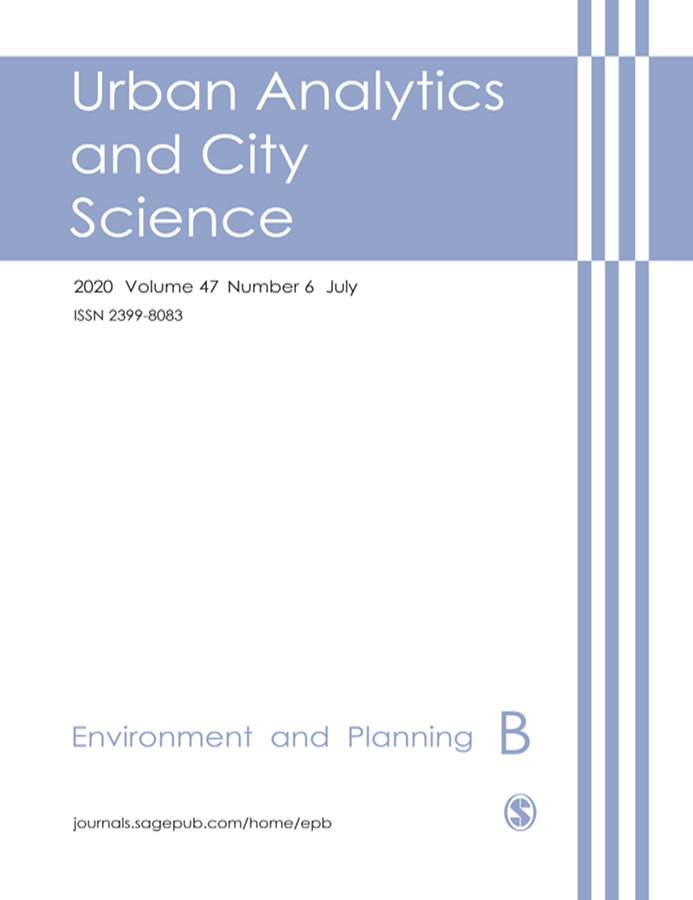
About this journal:
摘要ABSTRACT
Zones, cells, and parcels have long been regarded as the main units of analysis in urban modeling. However, only limited attention has been paid to street-level urban modeling. The emergence of fine-scale open and new data available from various sources has created substantial opportunities for research on urban modeling at the street level, particularly for modeling the spatiotemporal process of urban phenomena. In this paper, the street is adopted as the spatial unit of an urban model, and a conceptual framework for such modeling based on cellular automata is proposed. The validity of the proposed framework is verified by an empirical application to the urban space within the Fifth Ring Road in Beijing from 2014 to 2018. The results show that the density of points of interest simulated by the cellular automata model for 2018 is basically consistent with the actual distribution according to direct observation, and there is no significant difference in the proportion of high, medium, and low points of interest density streets between different ring roads. In addition, the deviation rate and Kappa index are 0.1171 and 0.97, respectively, indicating the proposed model can replicate historical patterns well and predict the transition of points of interest density at the street level. Subsequently, we considered three scenarios, adopting 2018 as the base year and using the proposed model to simulate the distribution of points of interest density in 2022 and the changes in points of interest density from 2018 to 2022. The conceptual framework and empirical application also provide support for urban planning and design based on the integration of linear public space and big data.

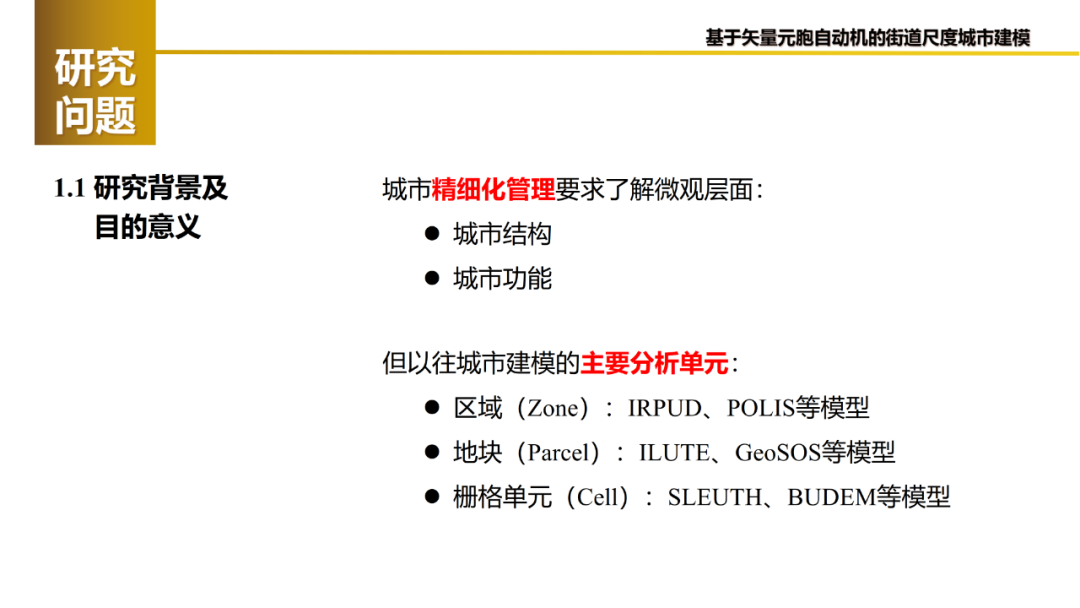
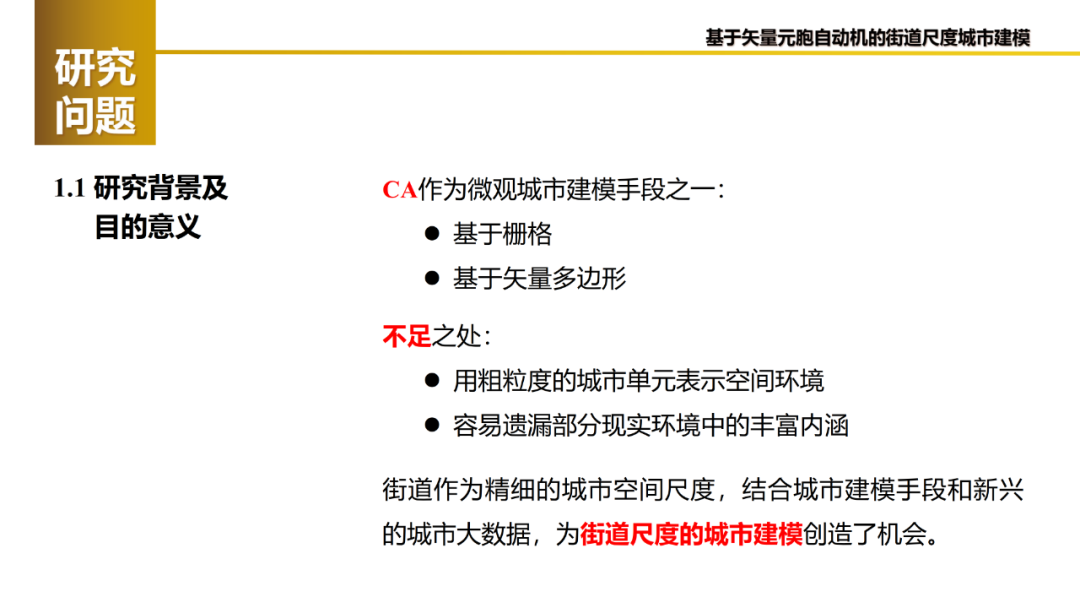
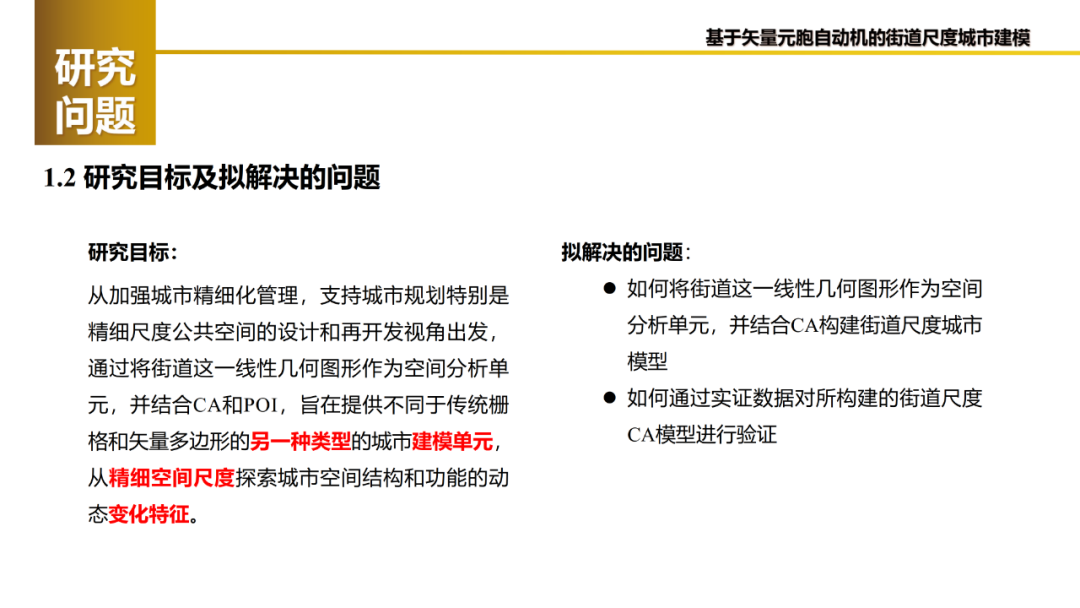
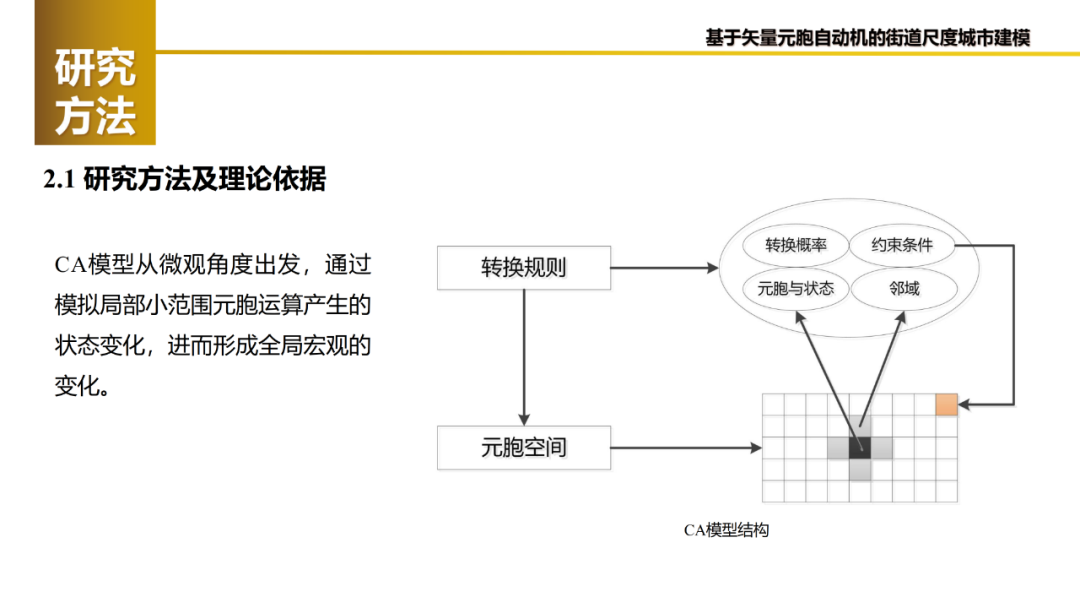
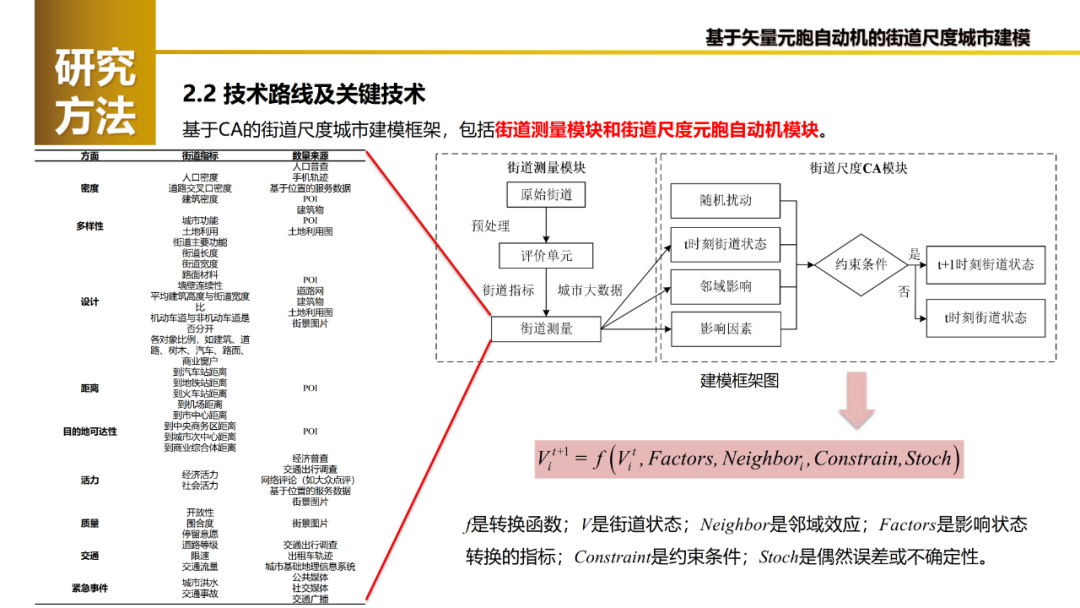
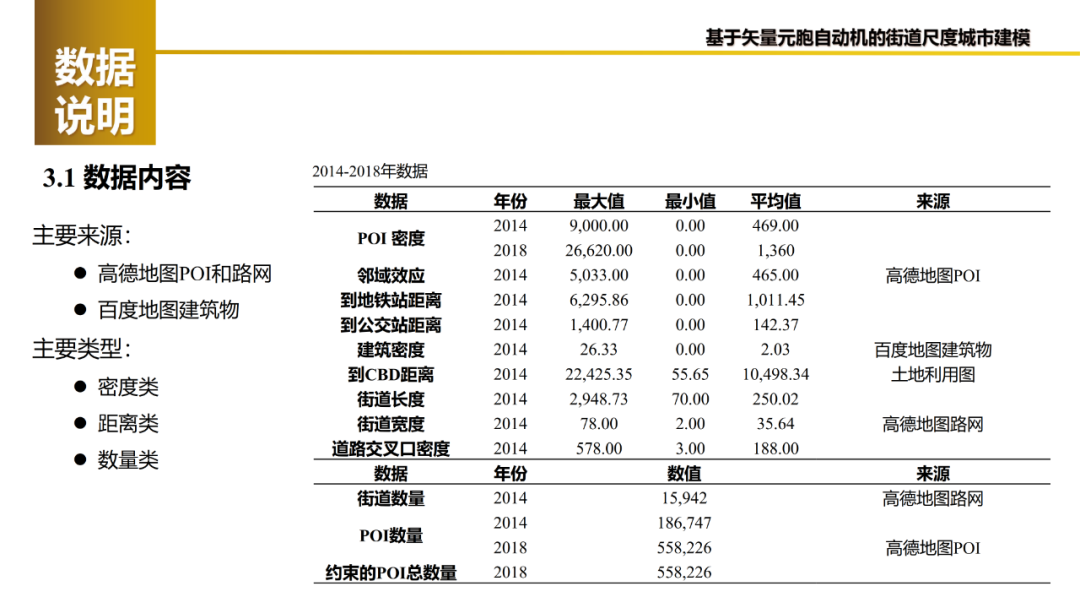
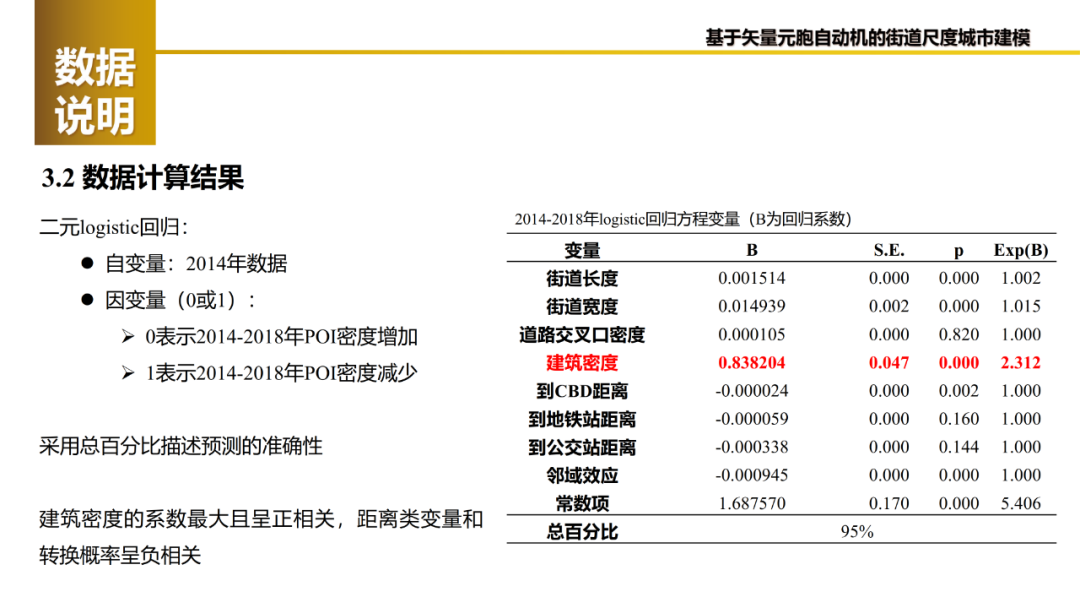
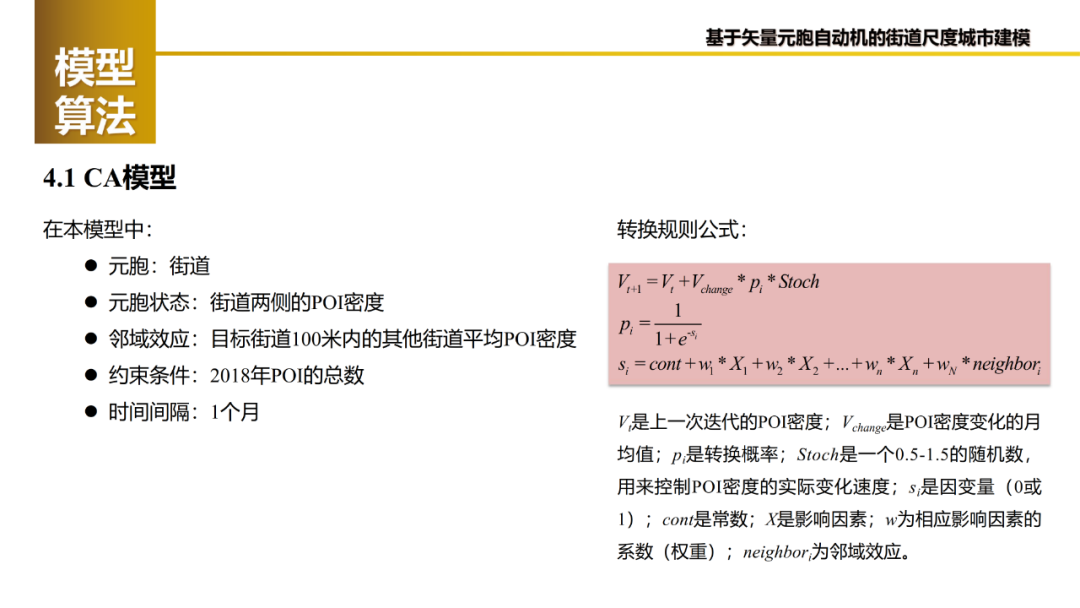
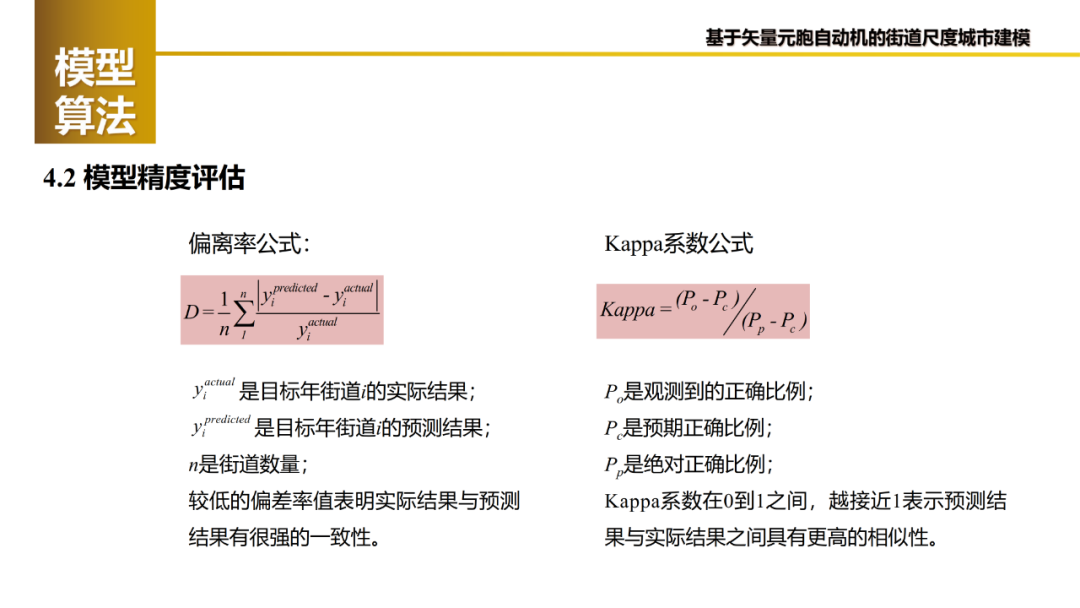
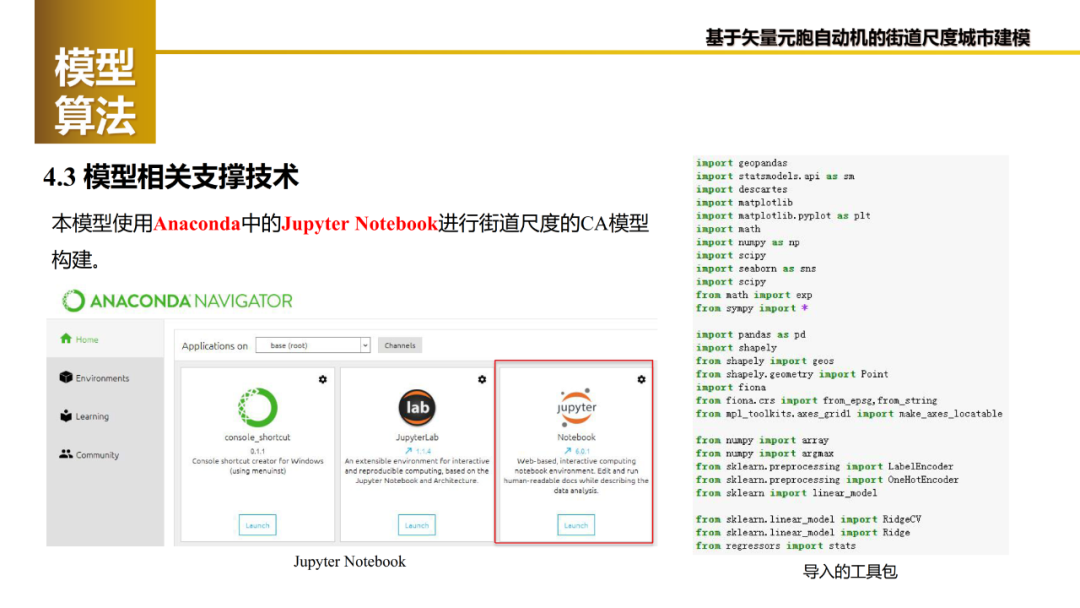
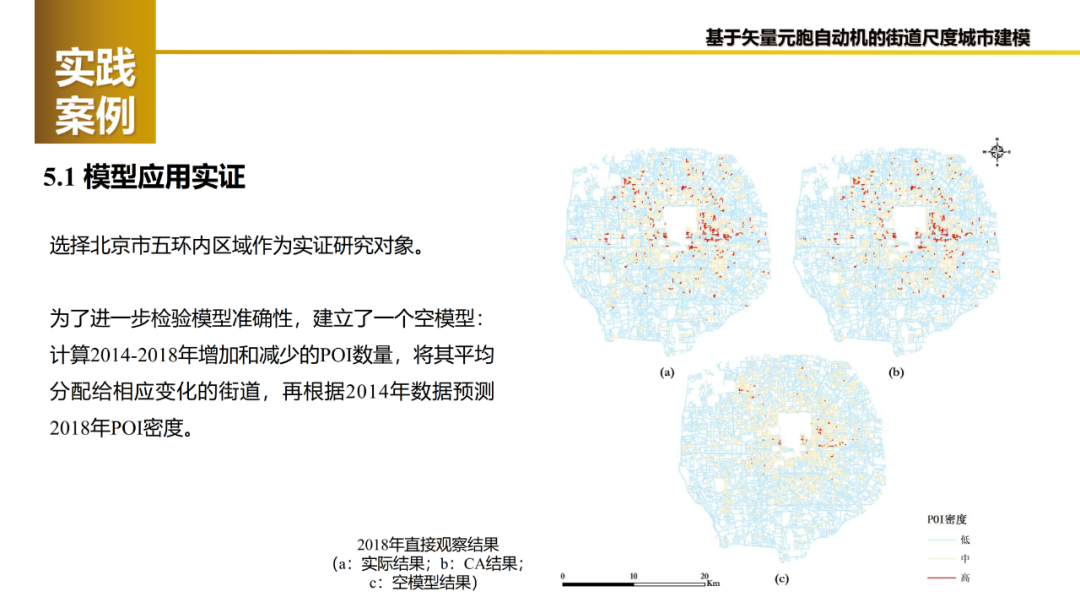
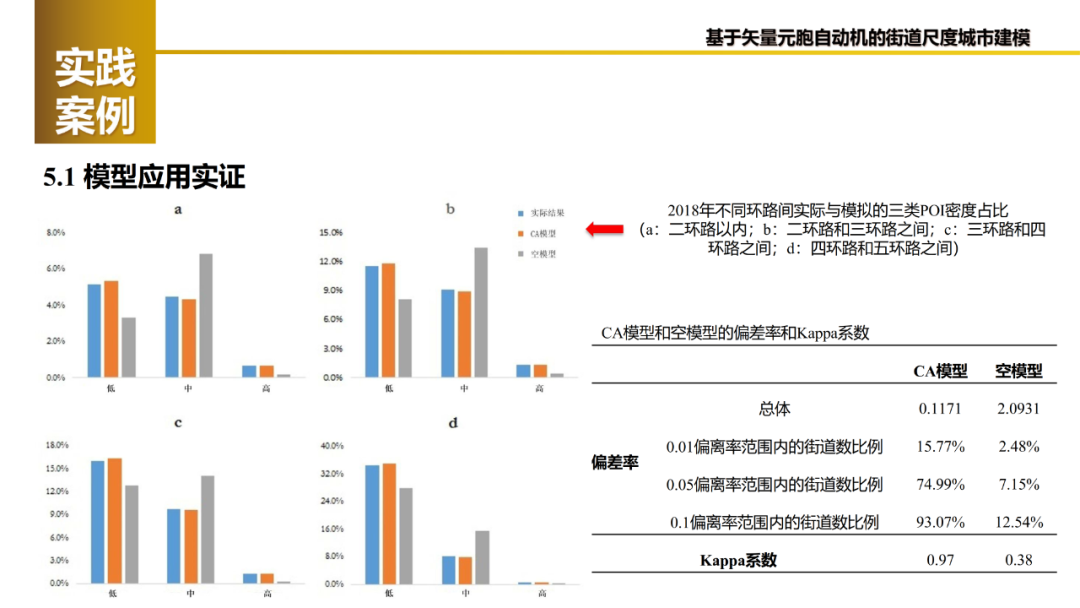
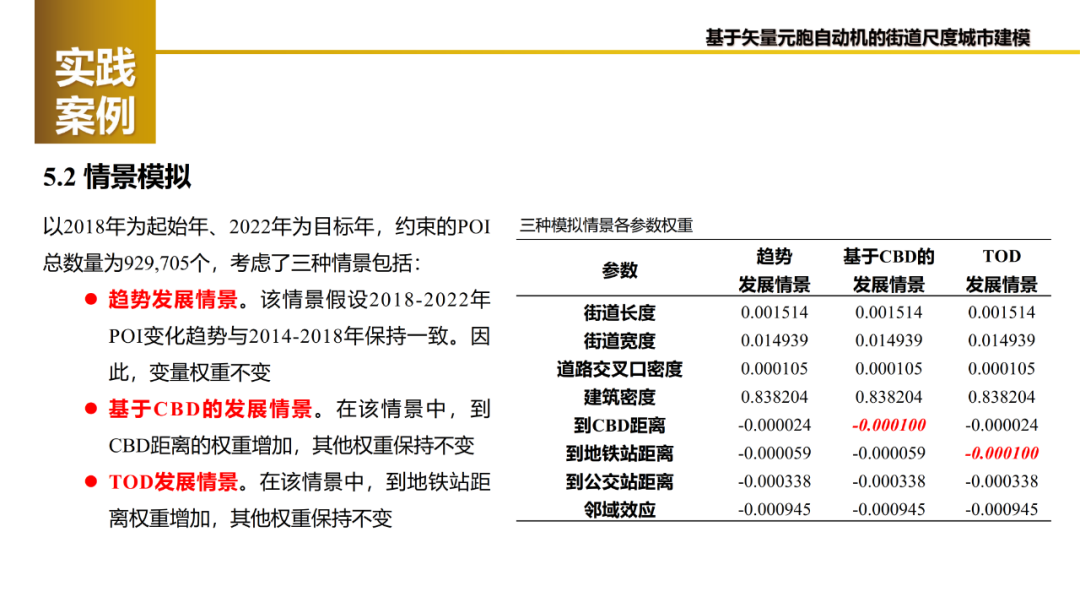
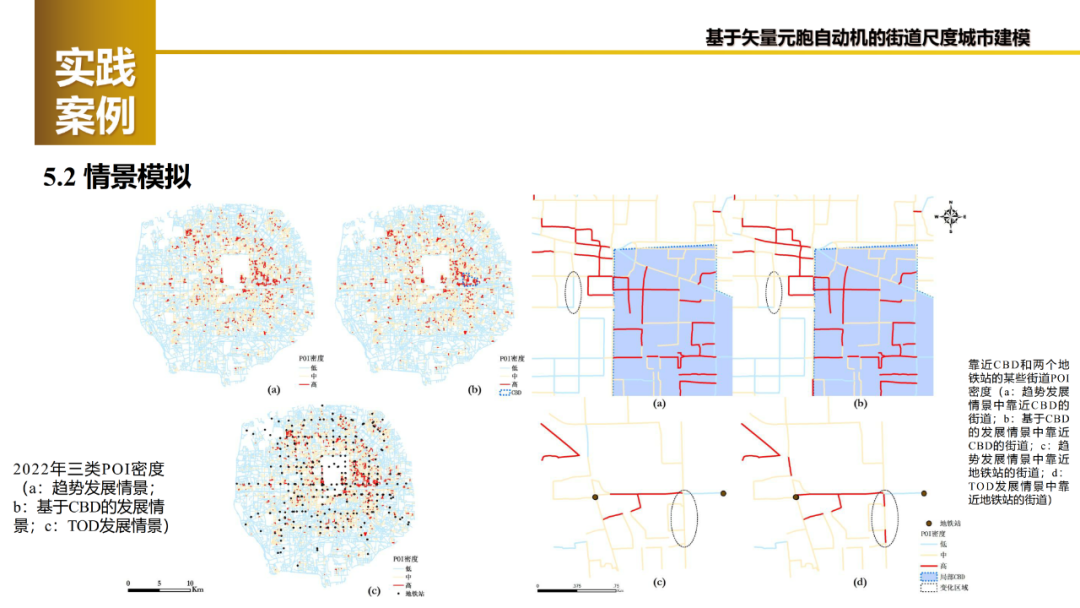
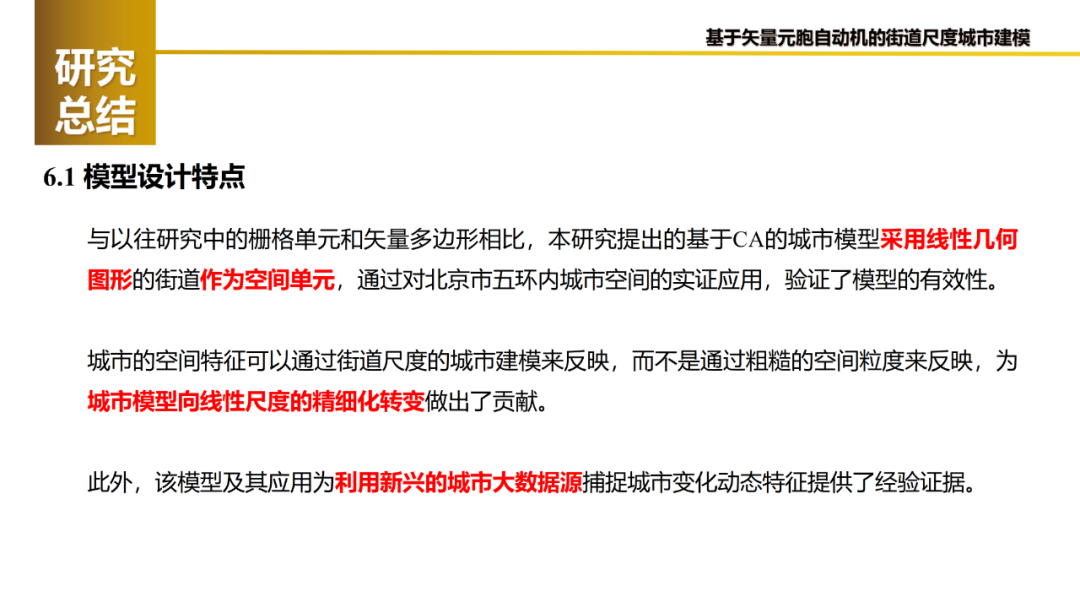
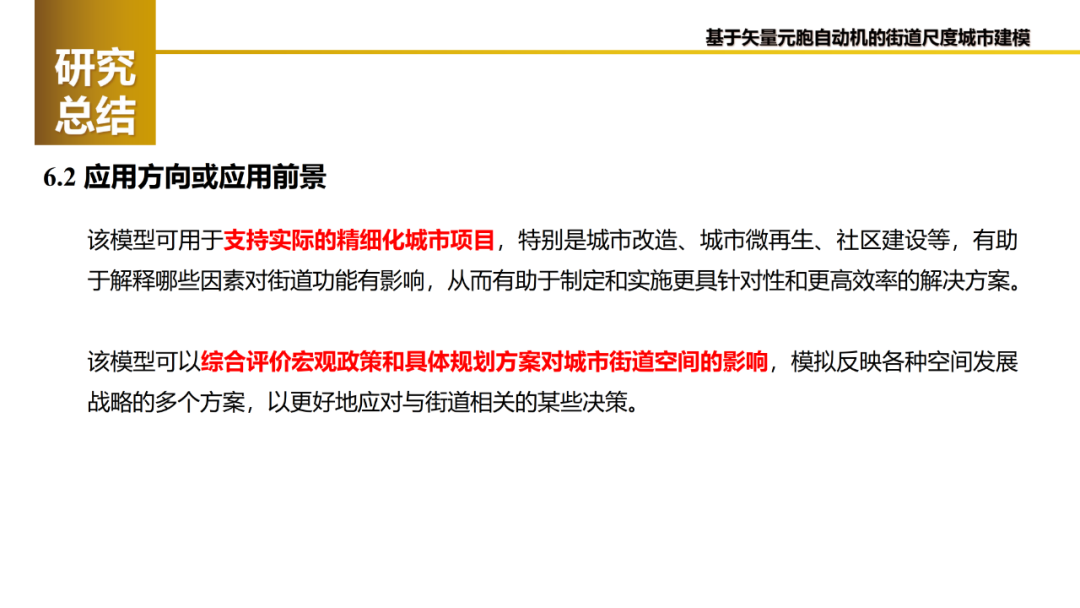

论文原文:
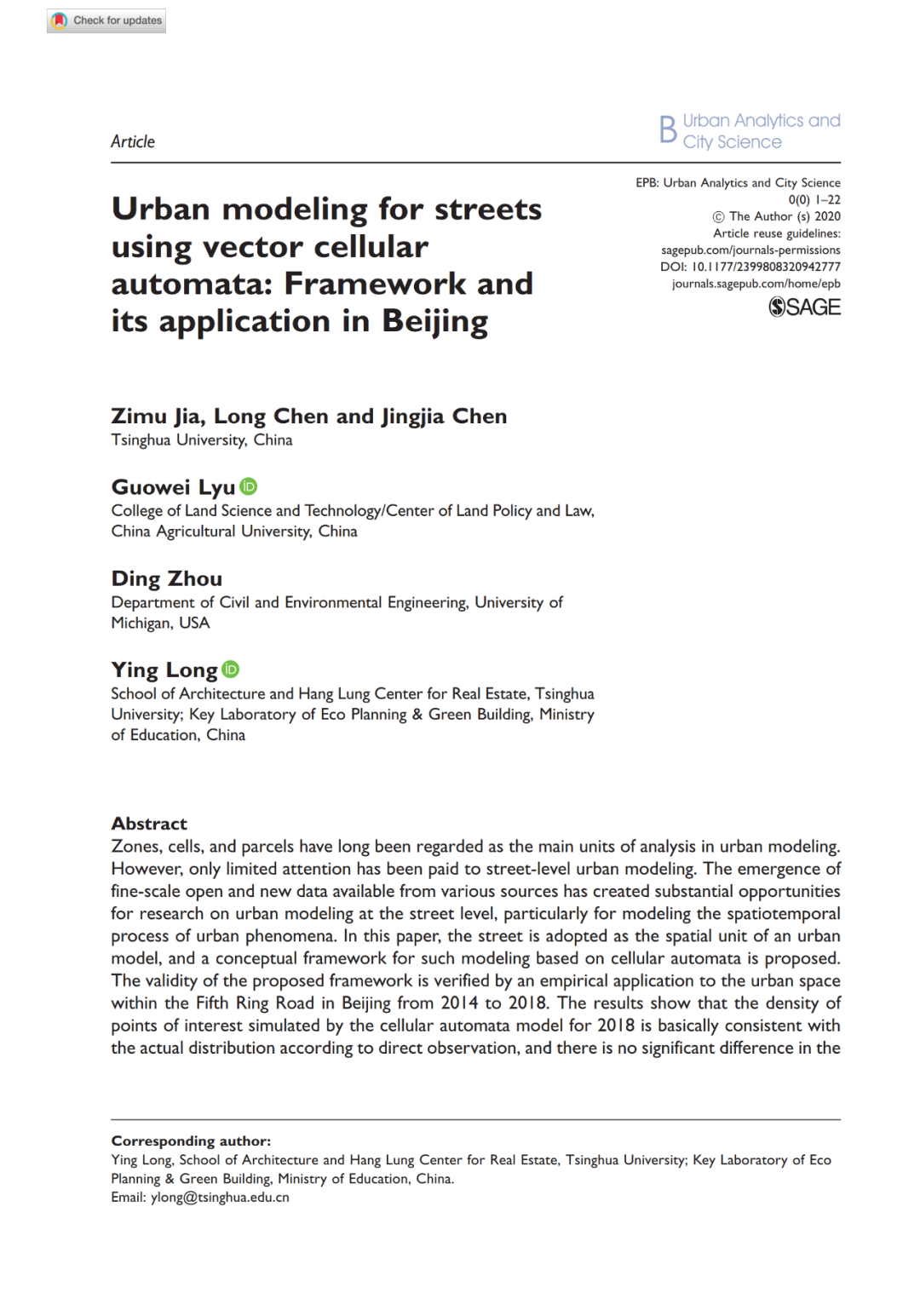
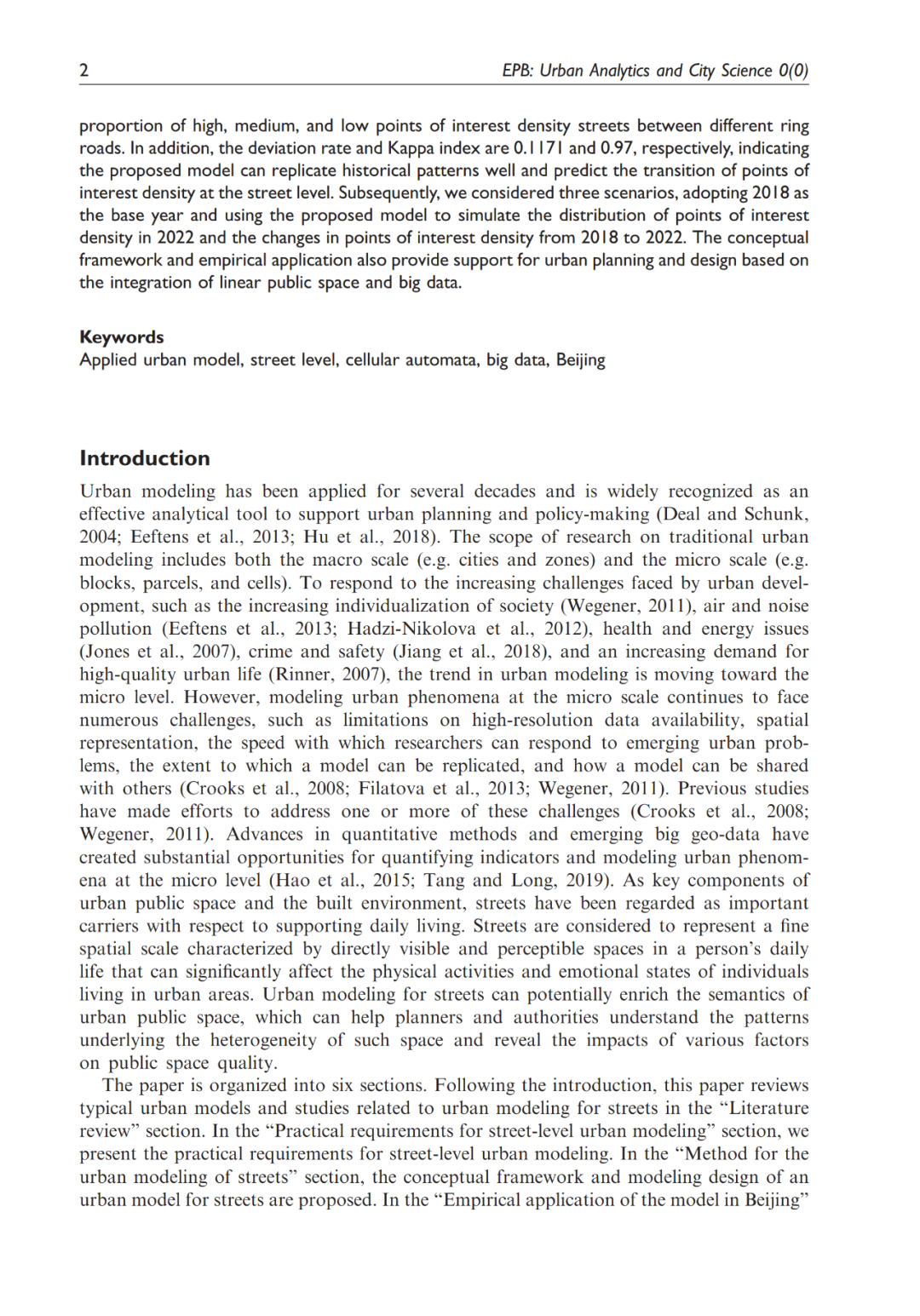
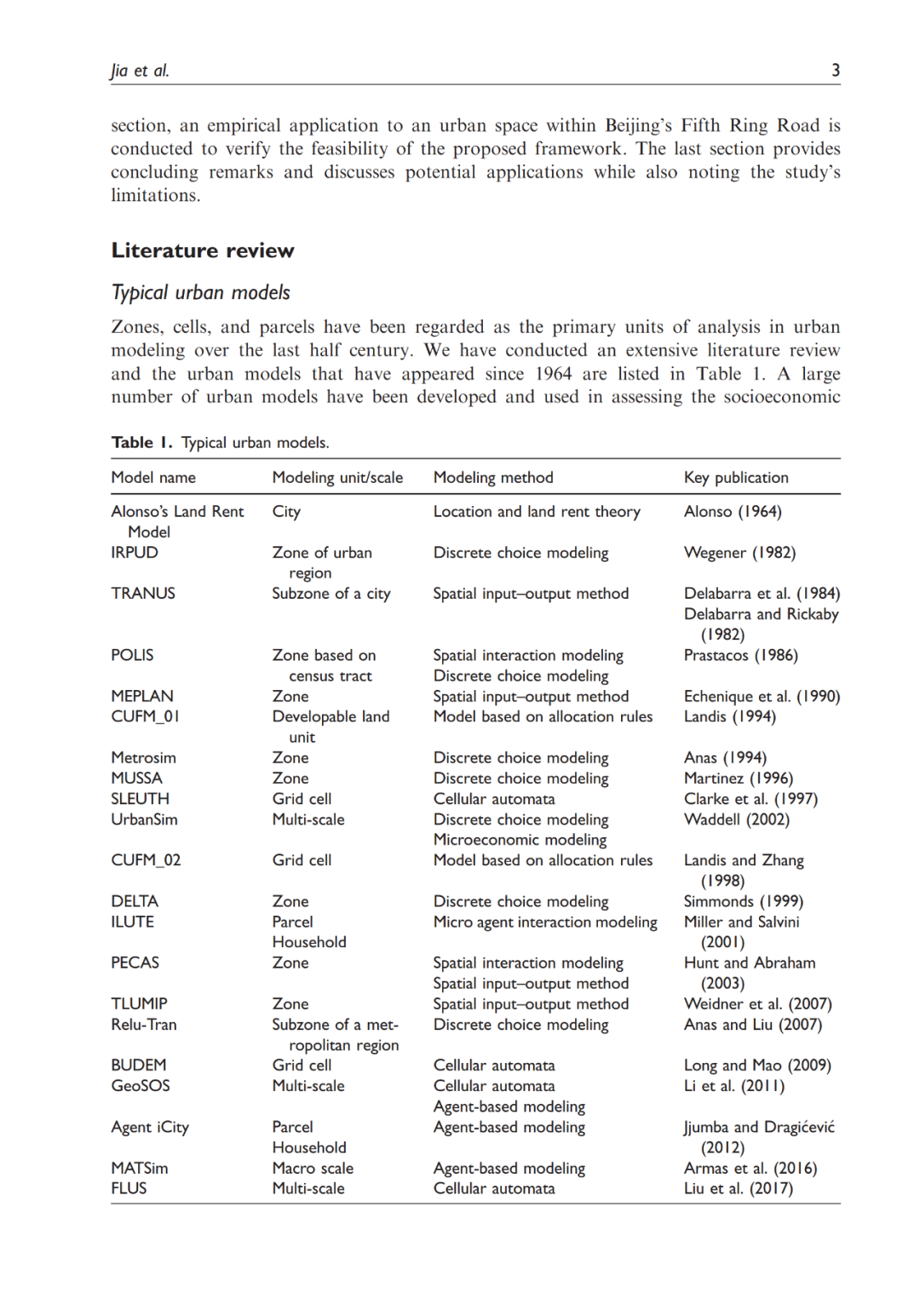

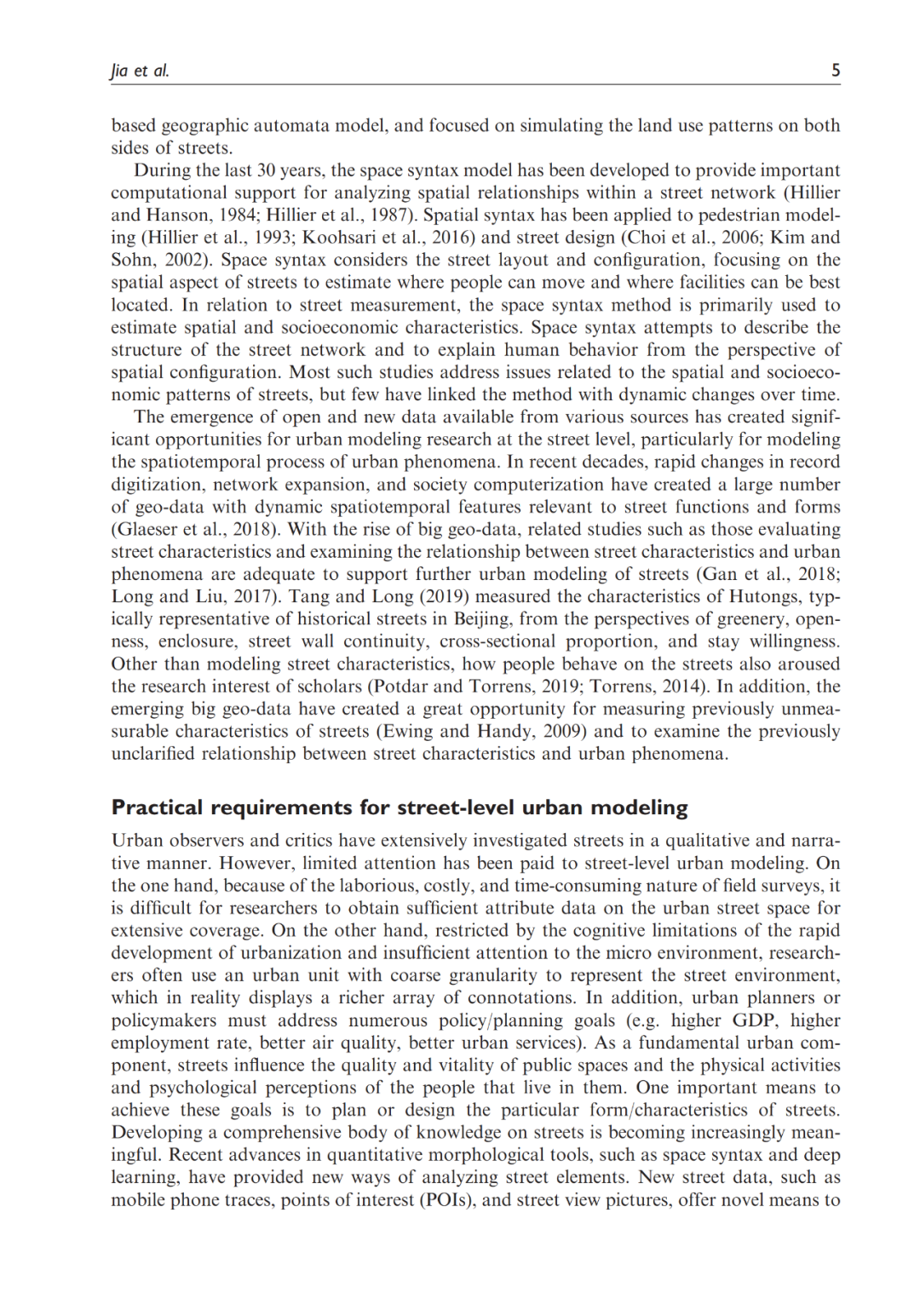
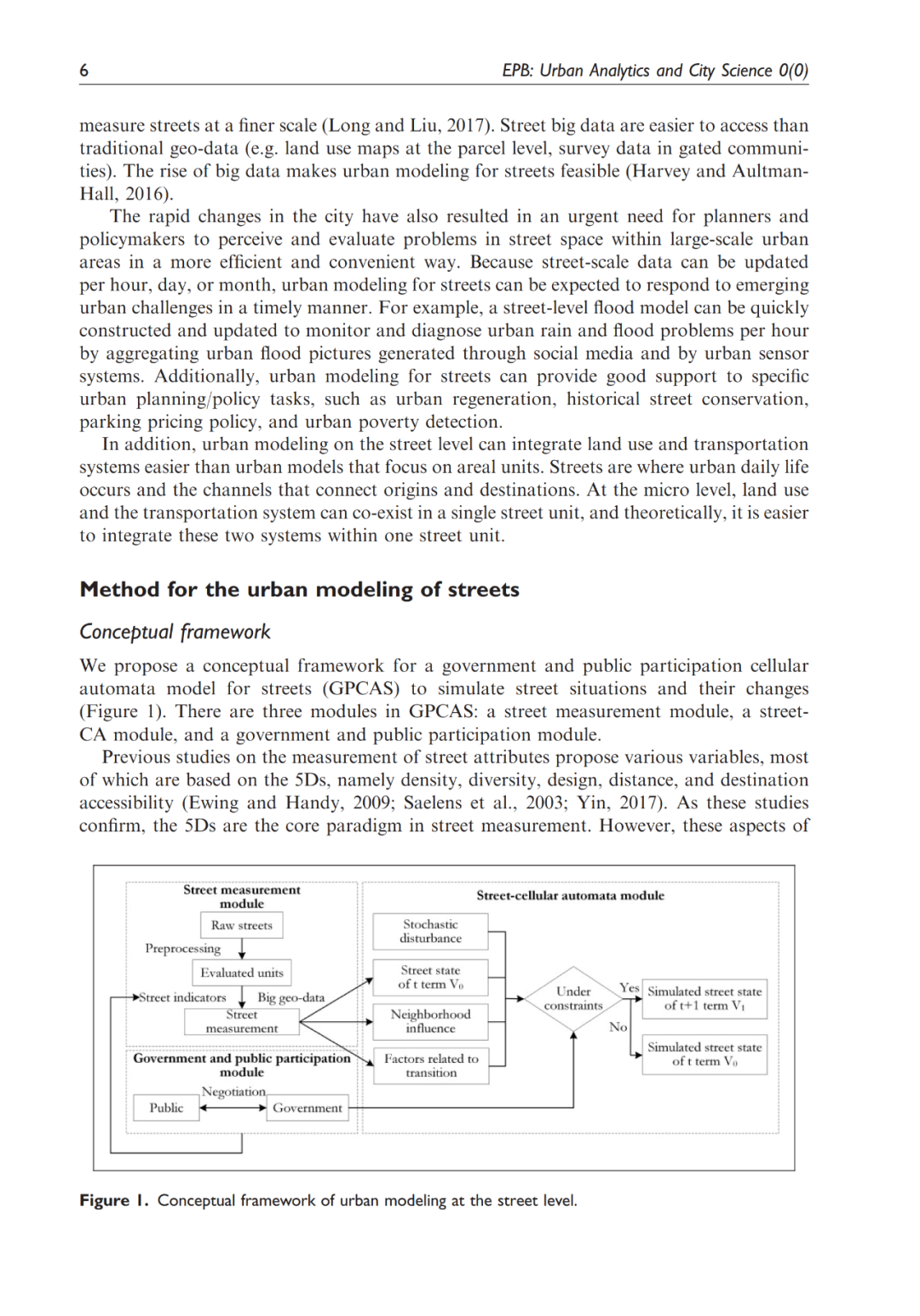
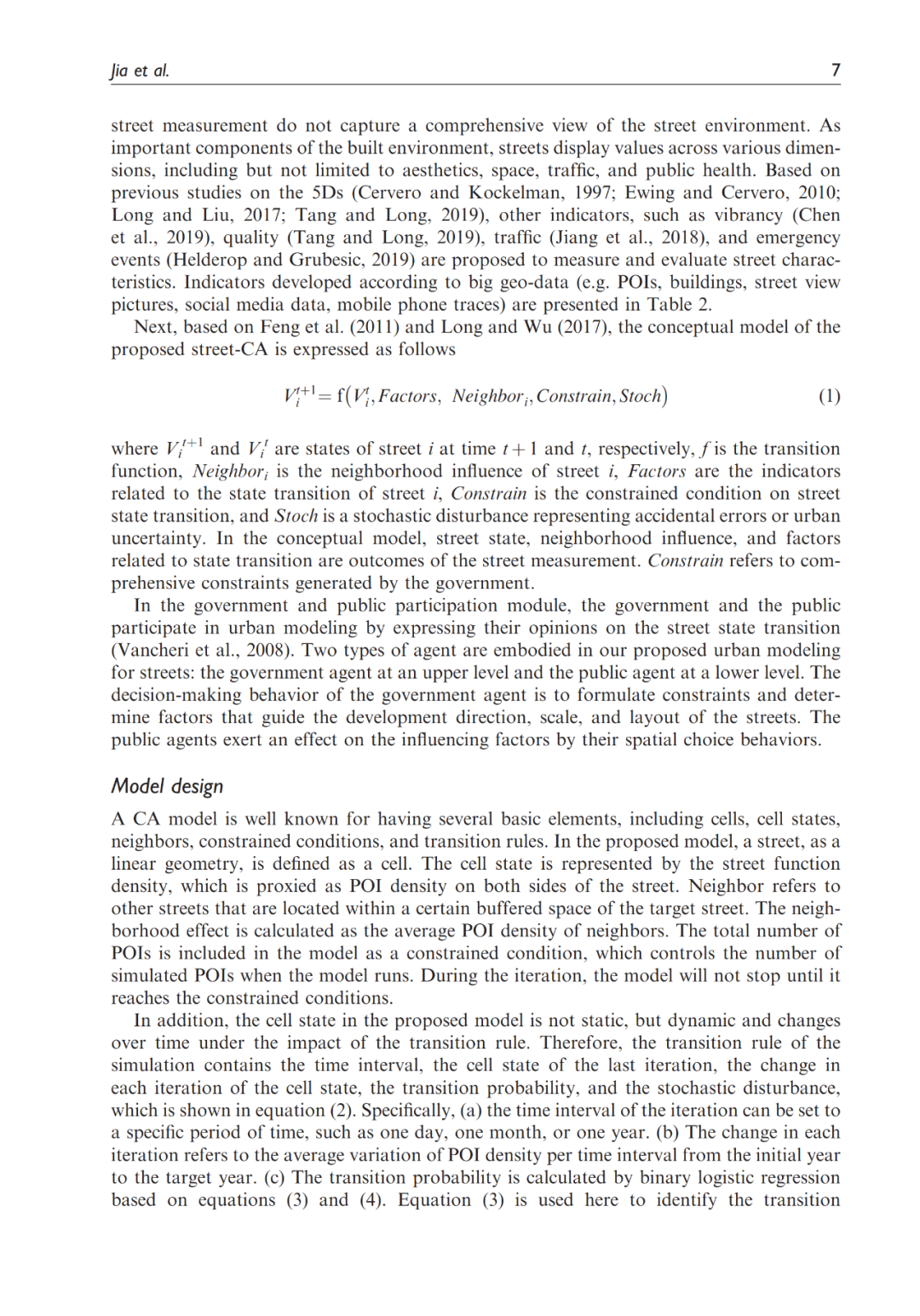
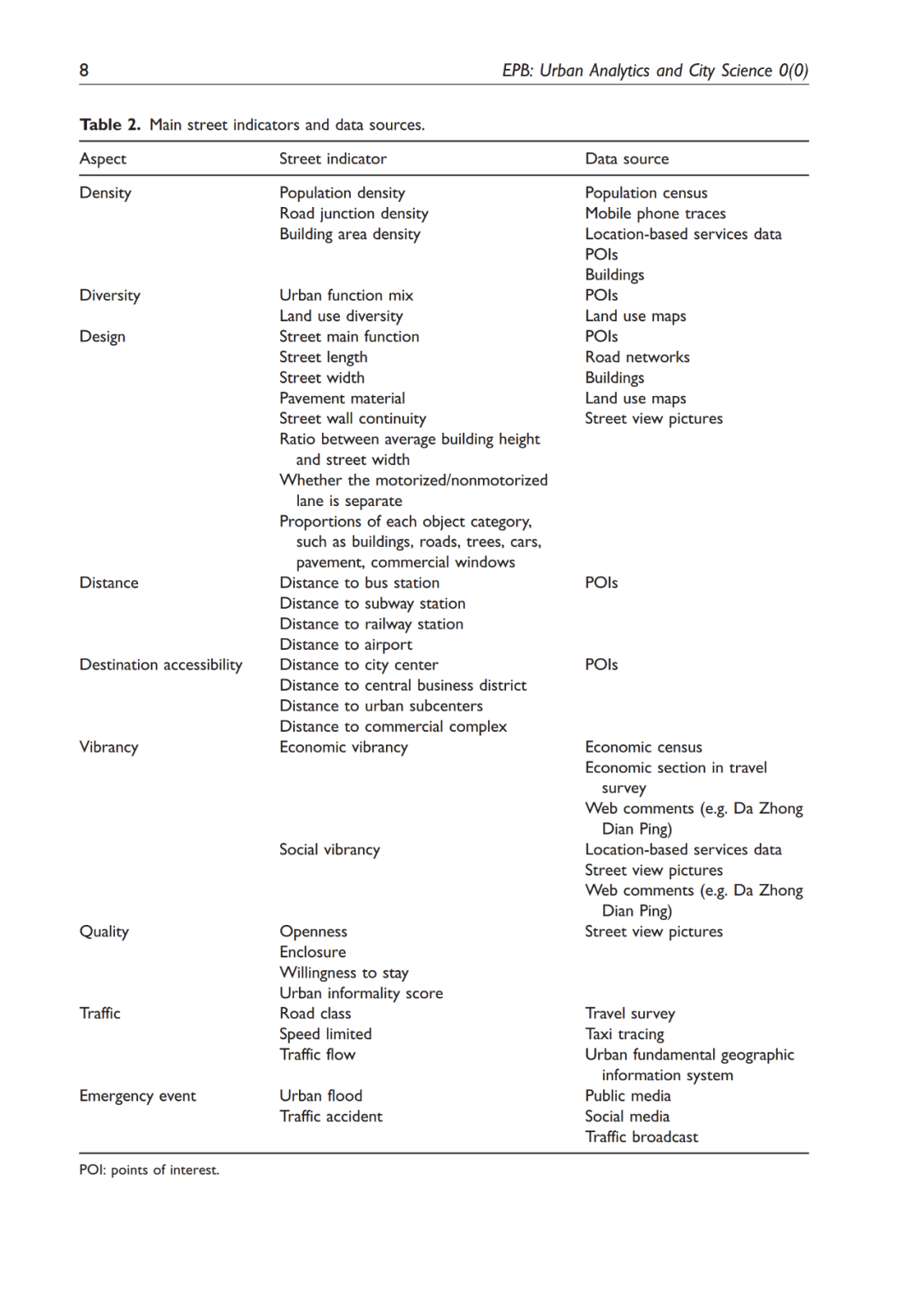
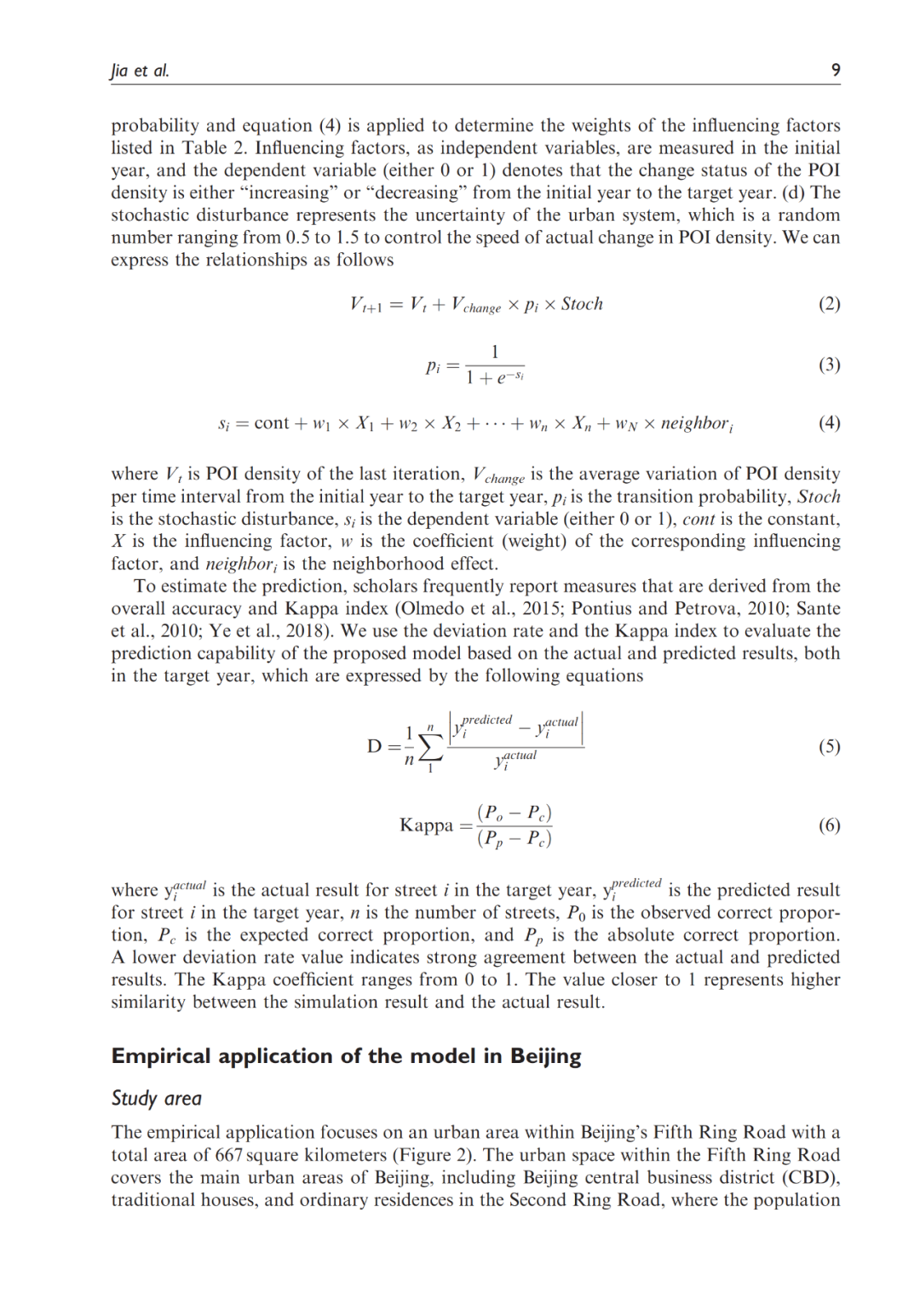

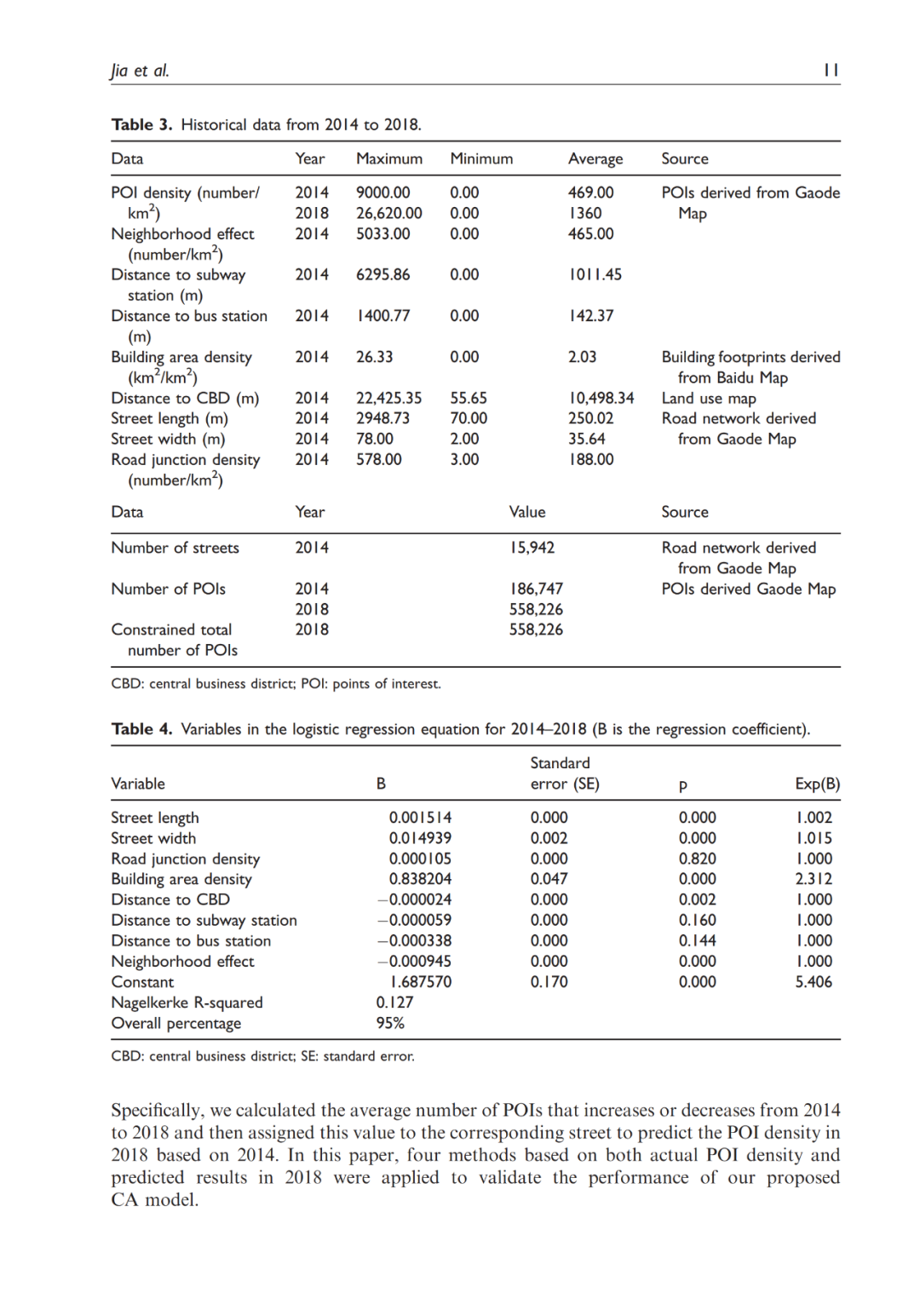
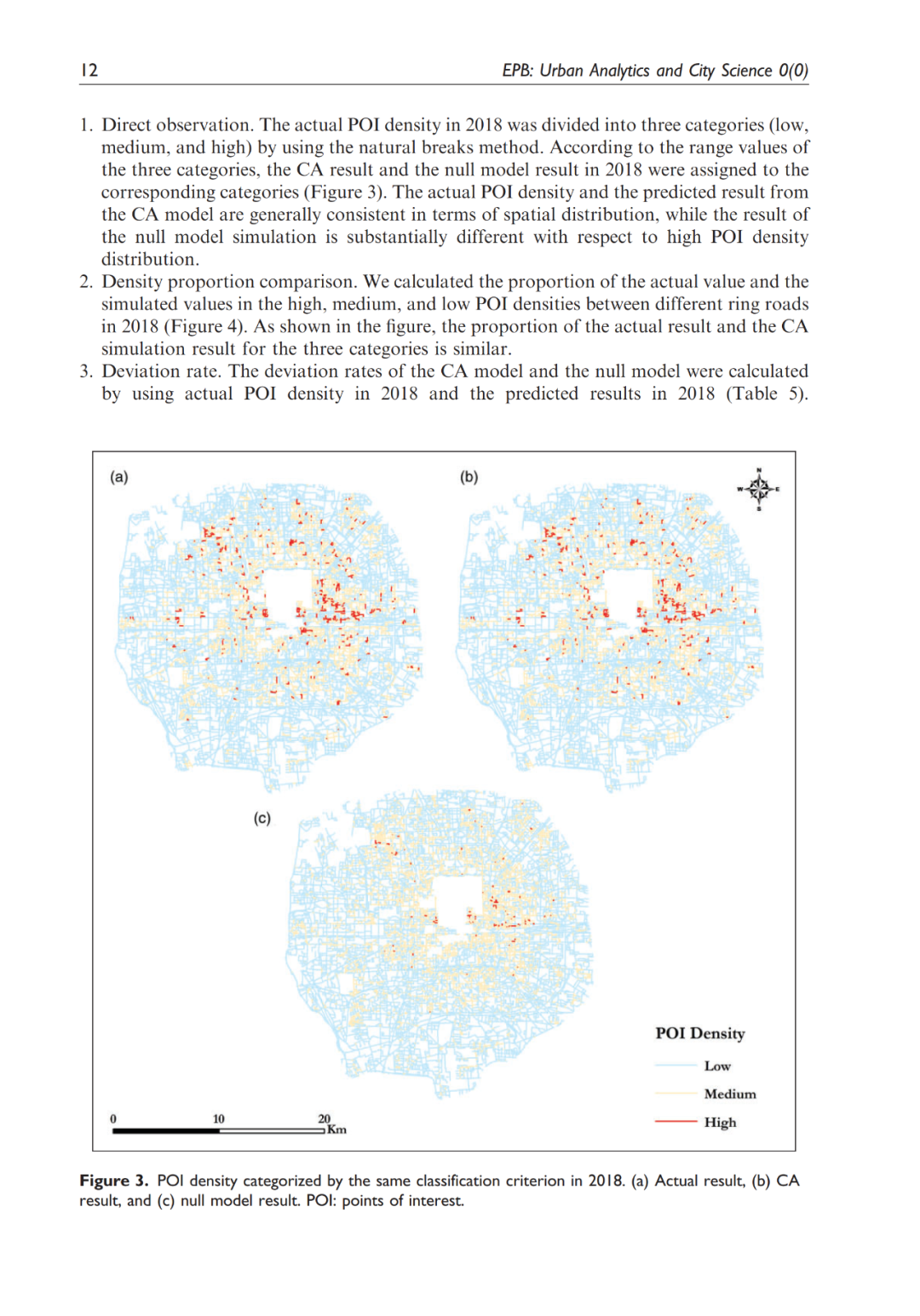
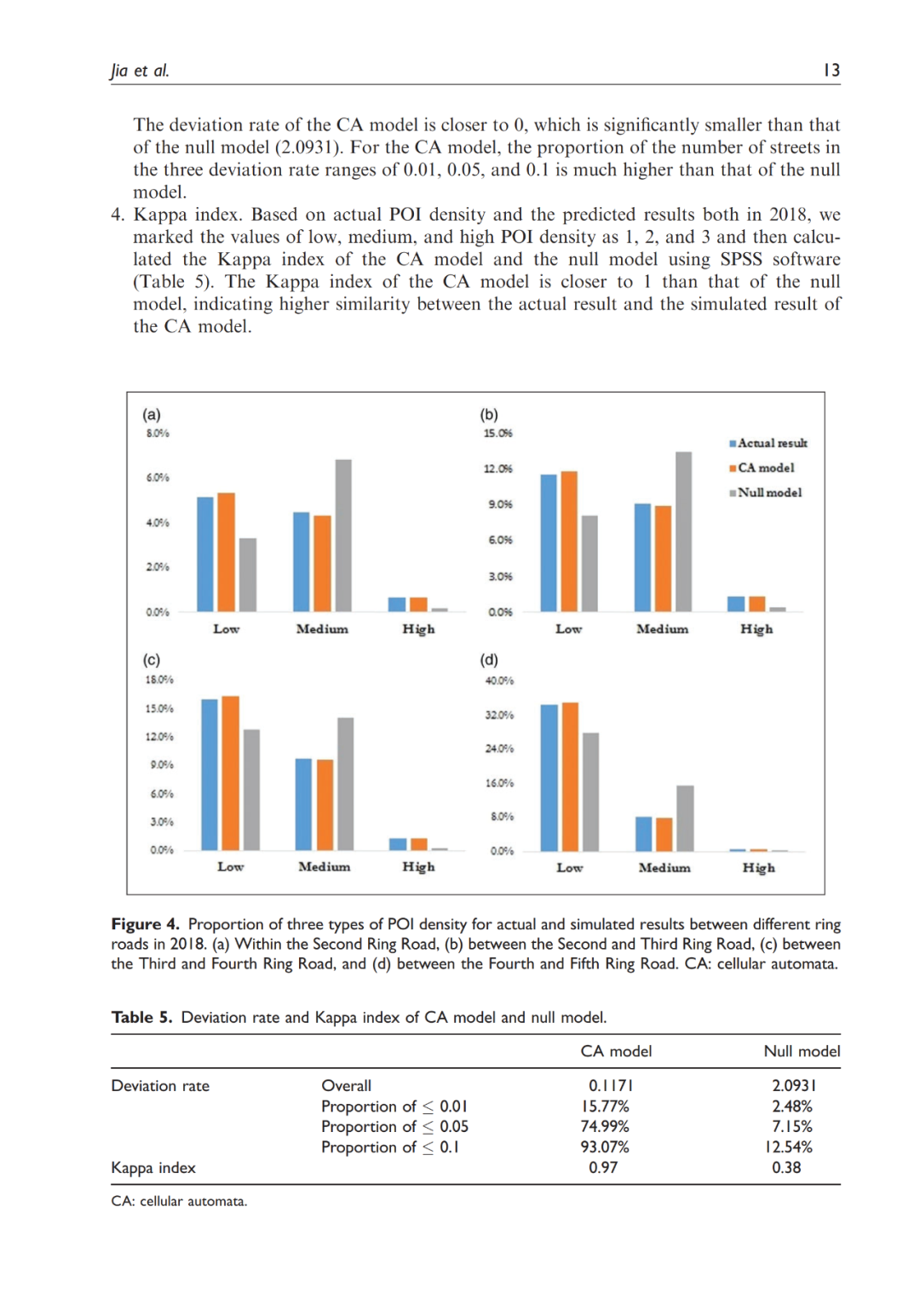
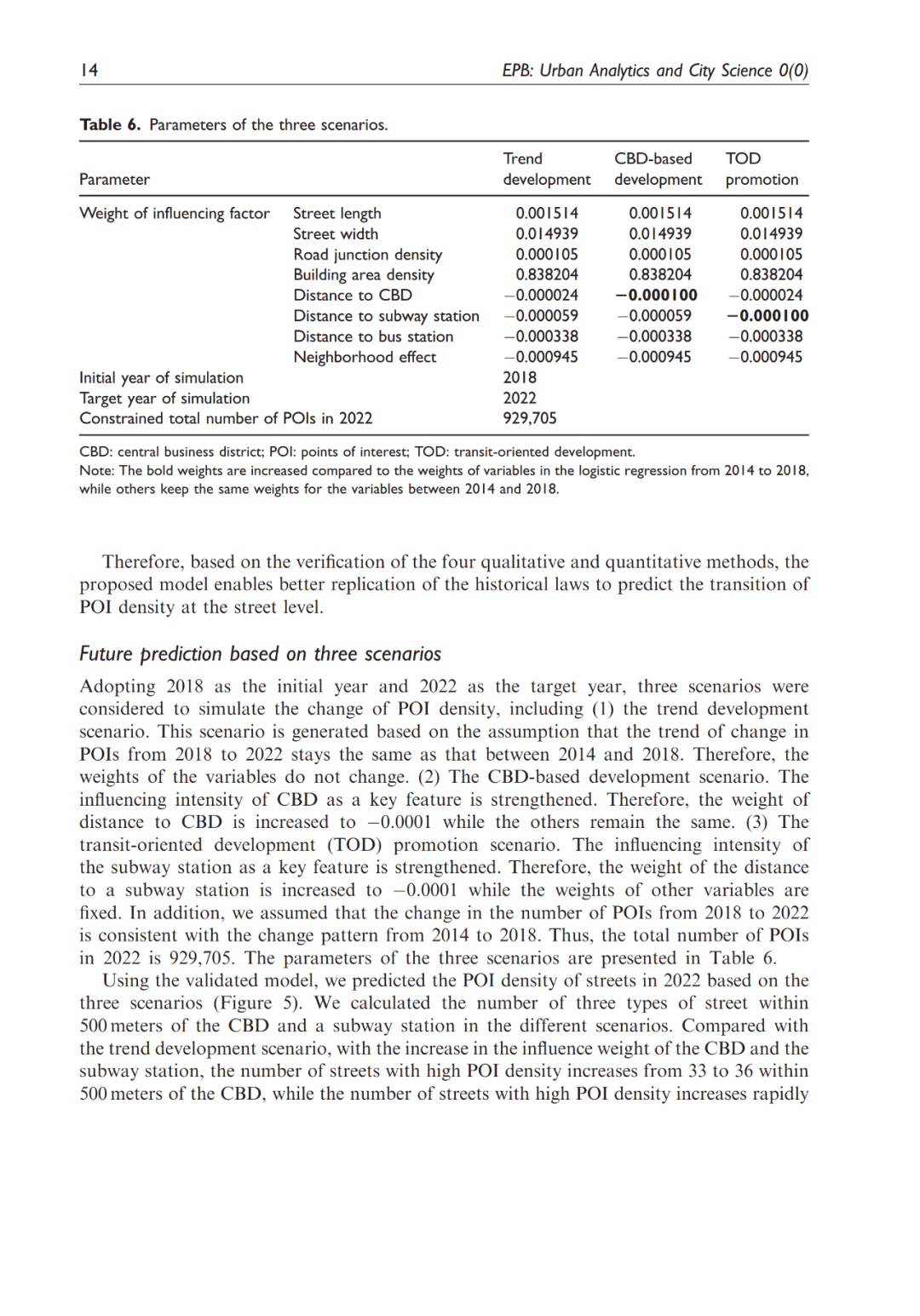
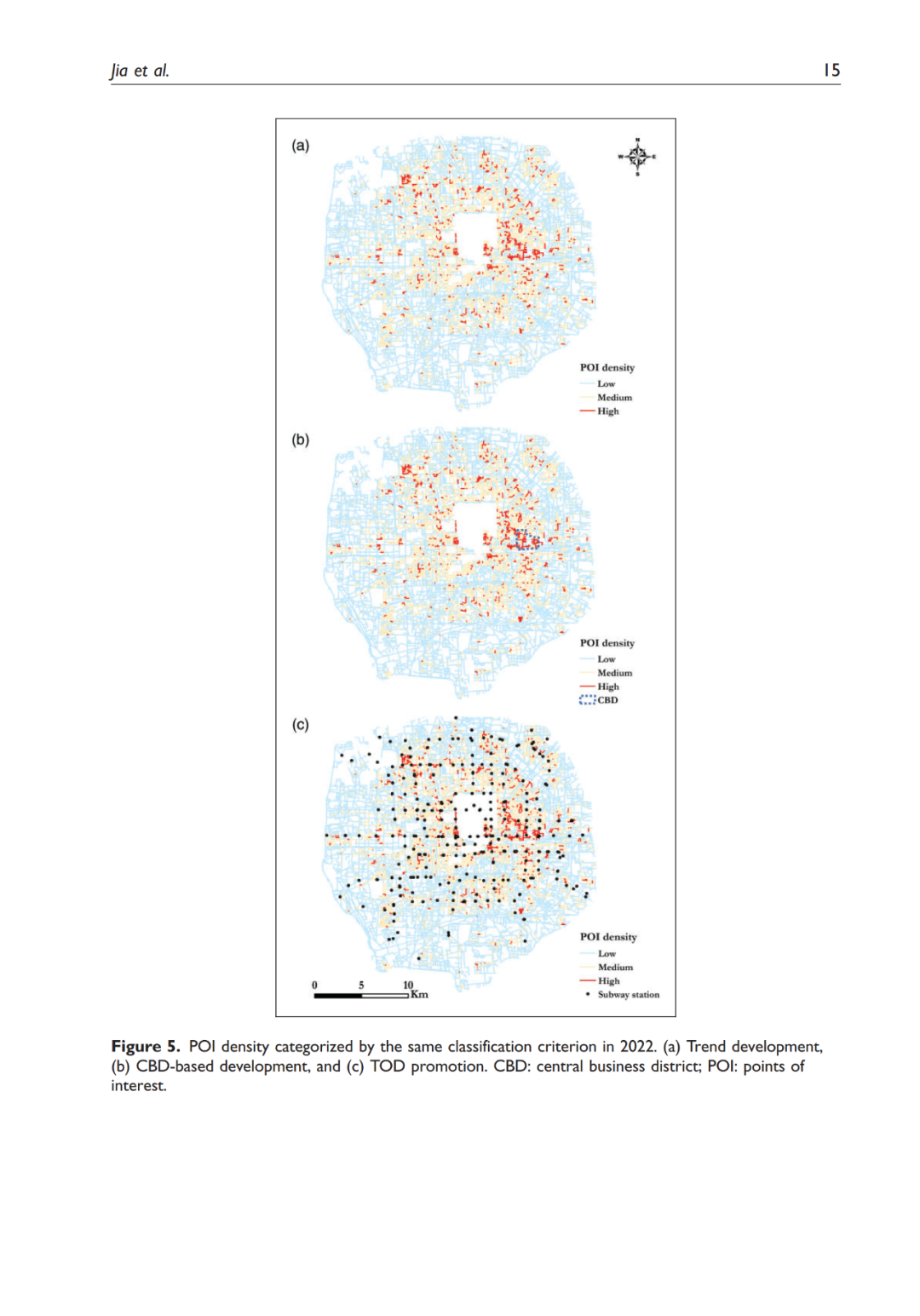
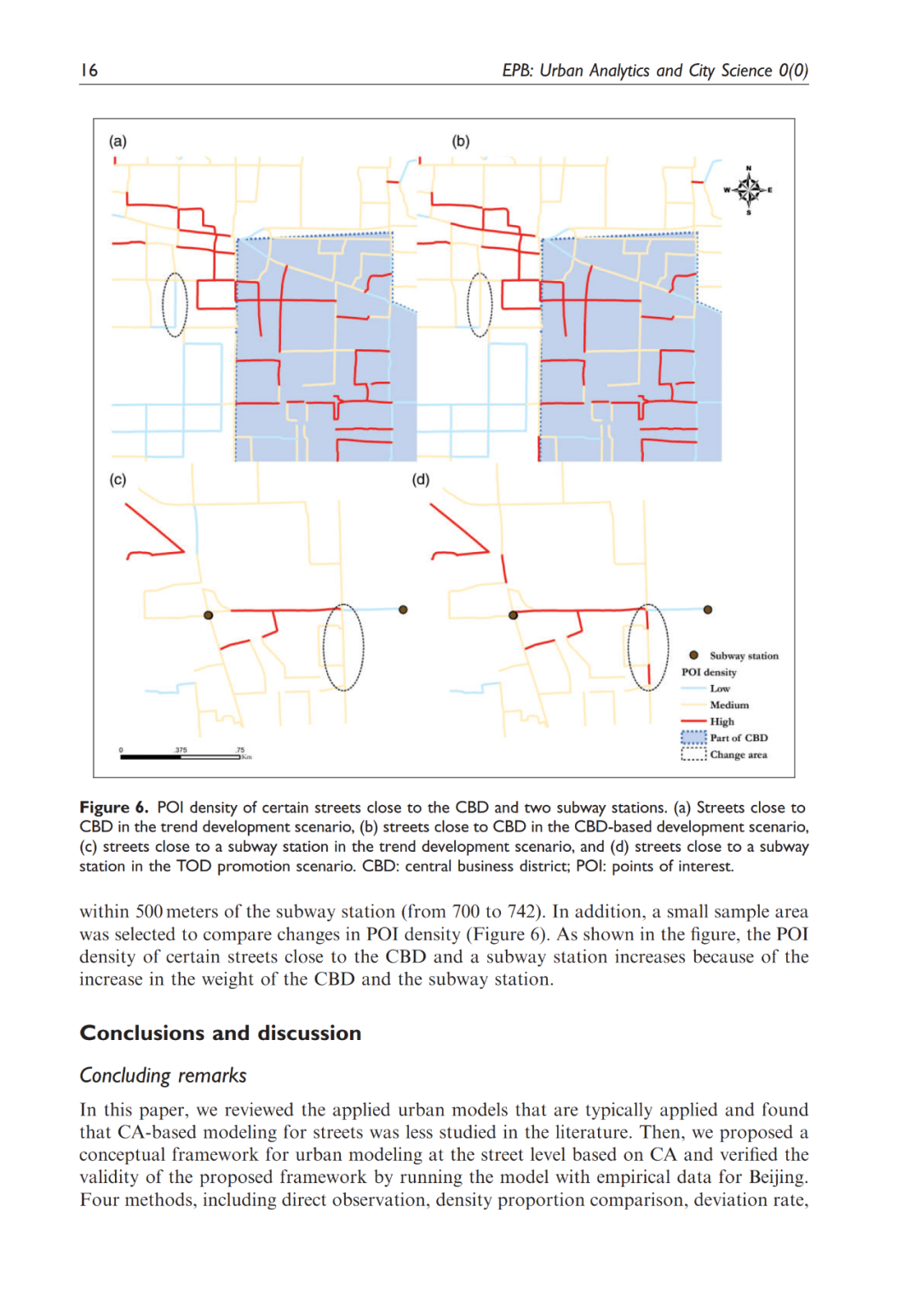
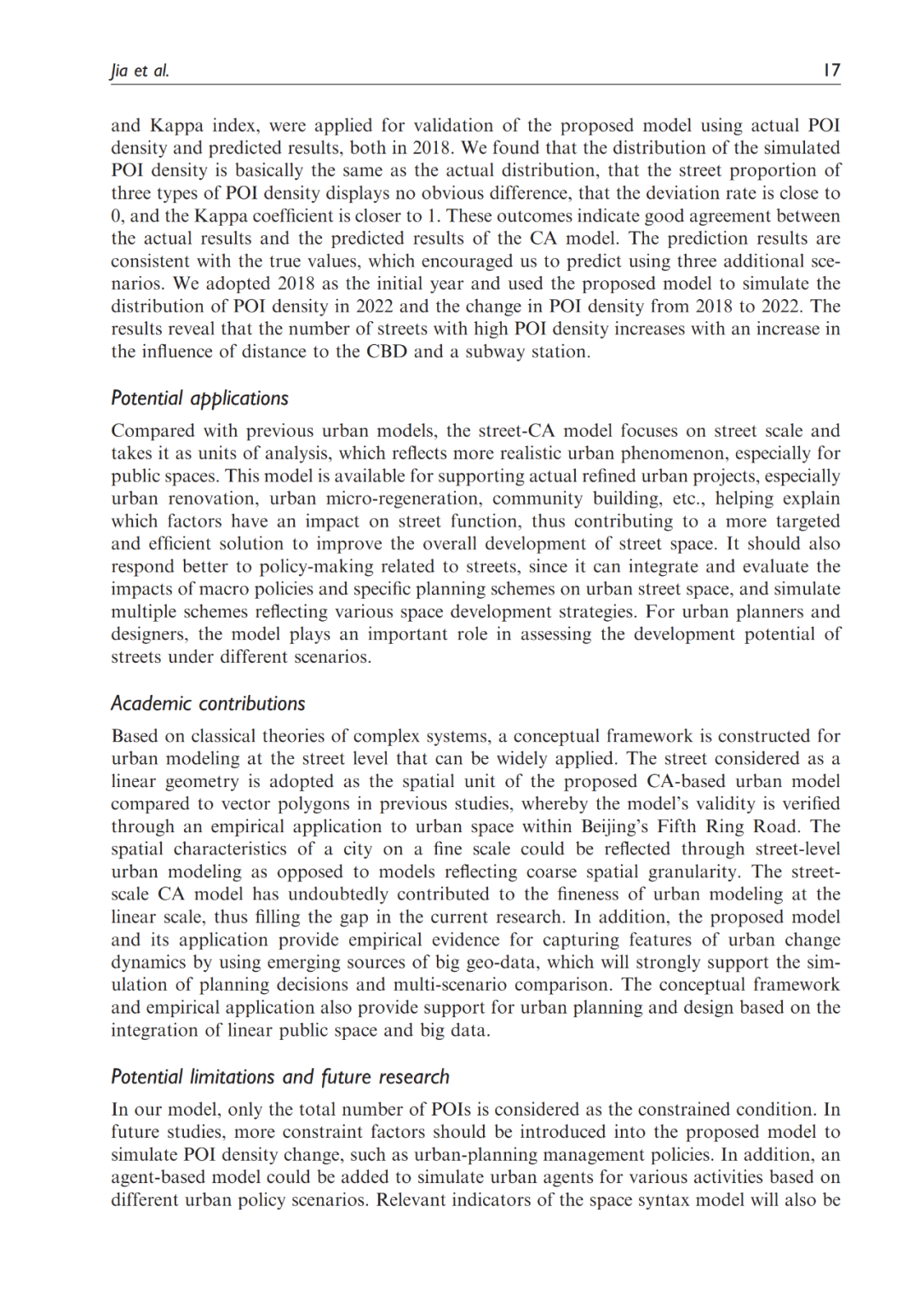
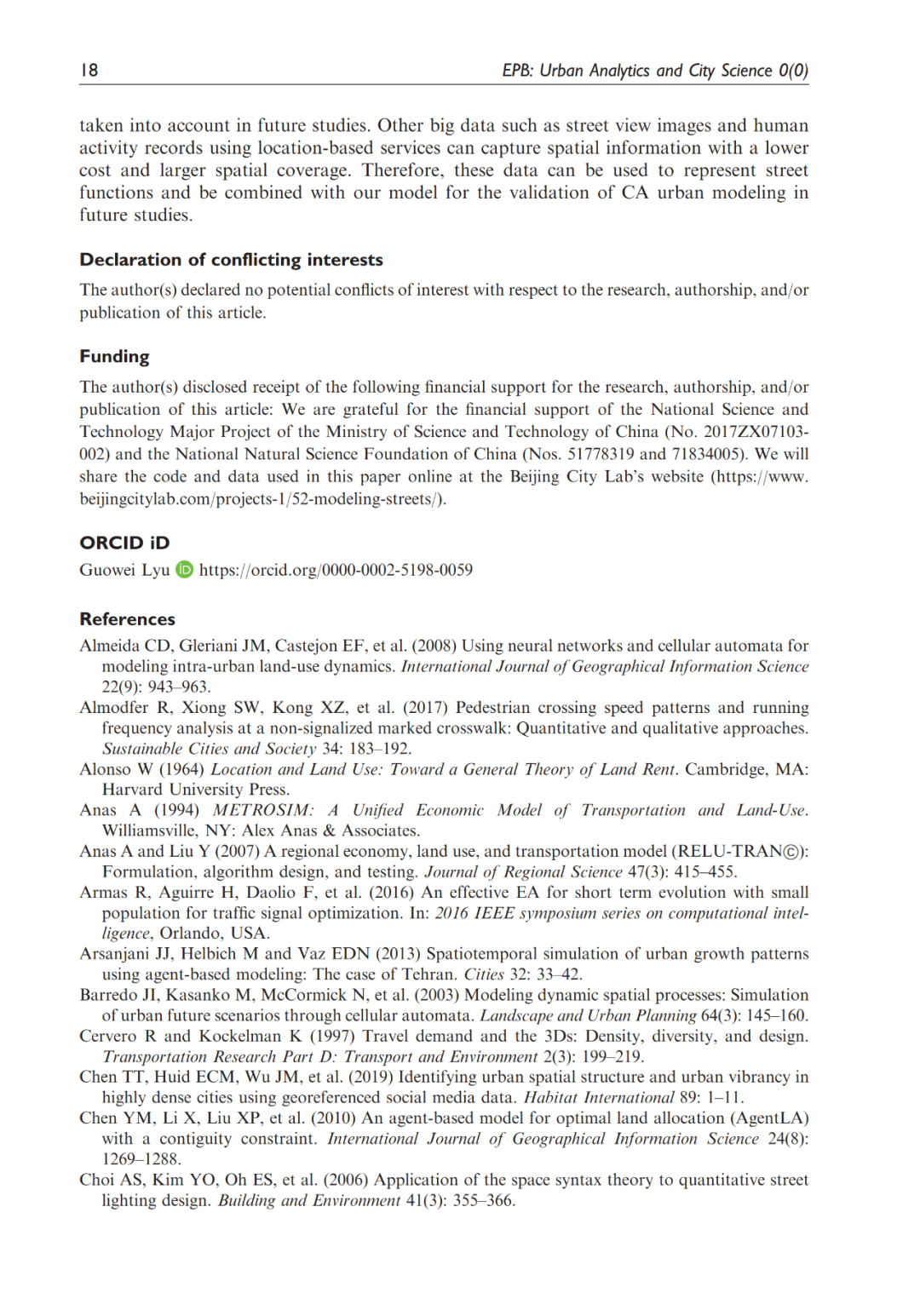
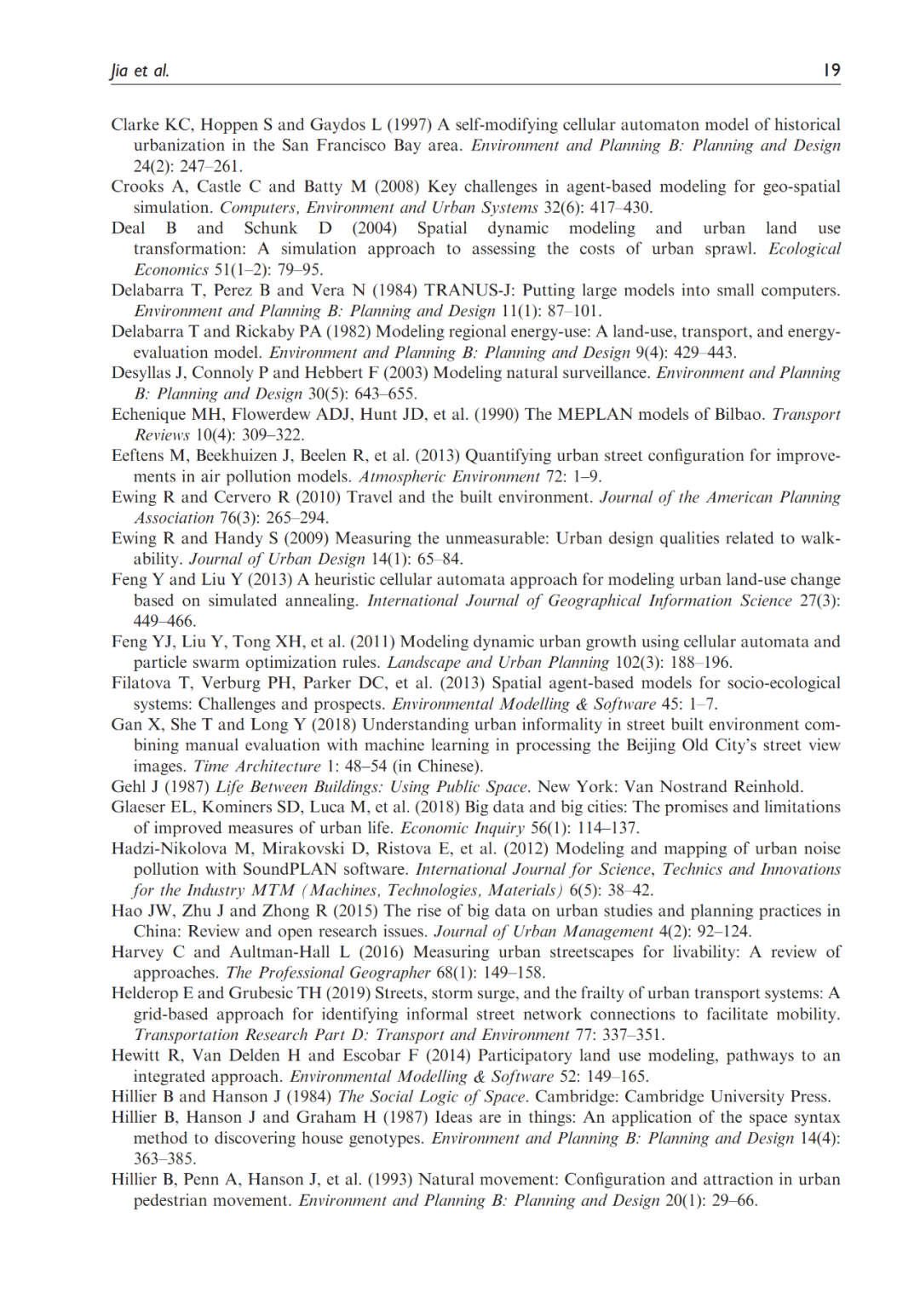
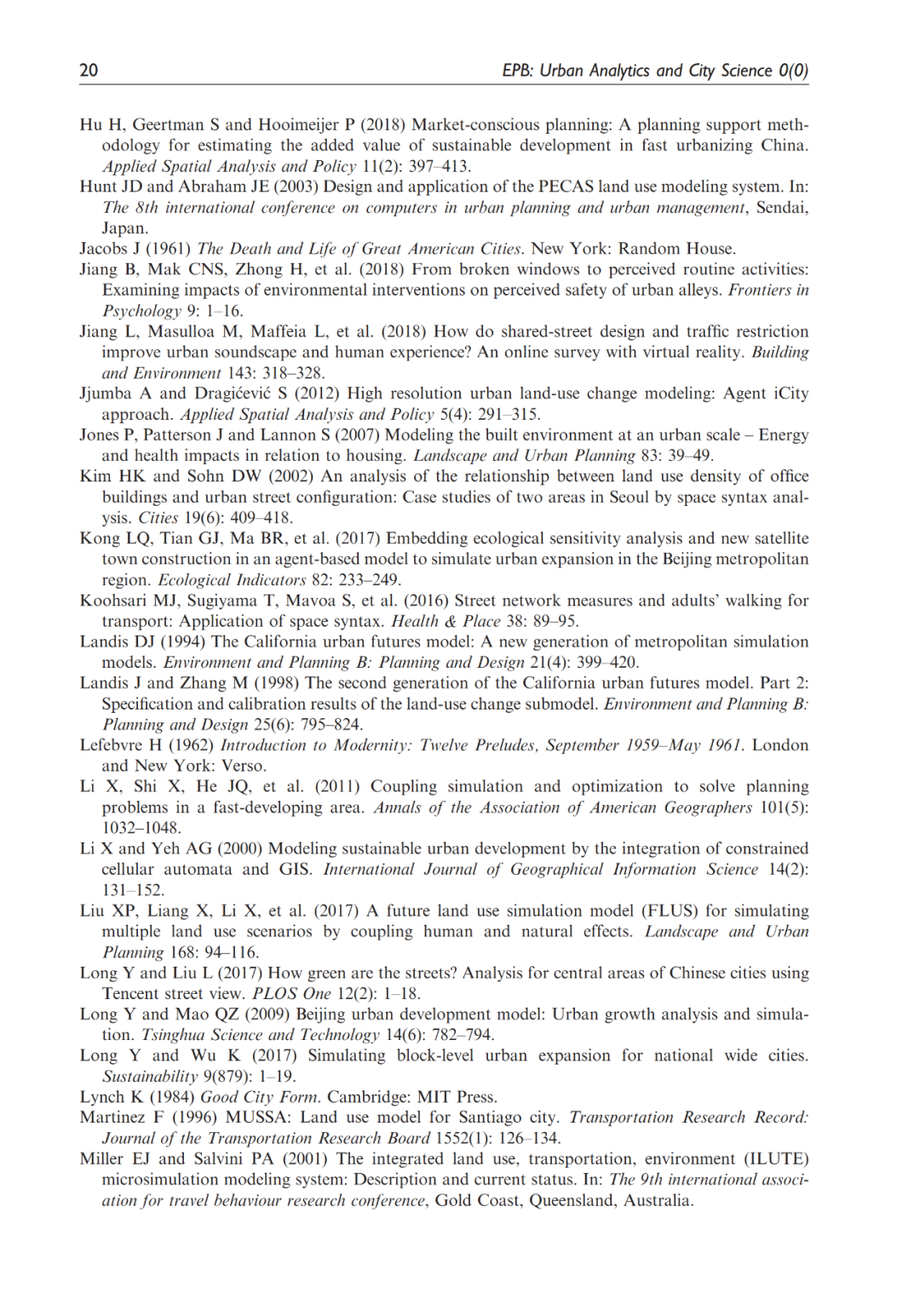
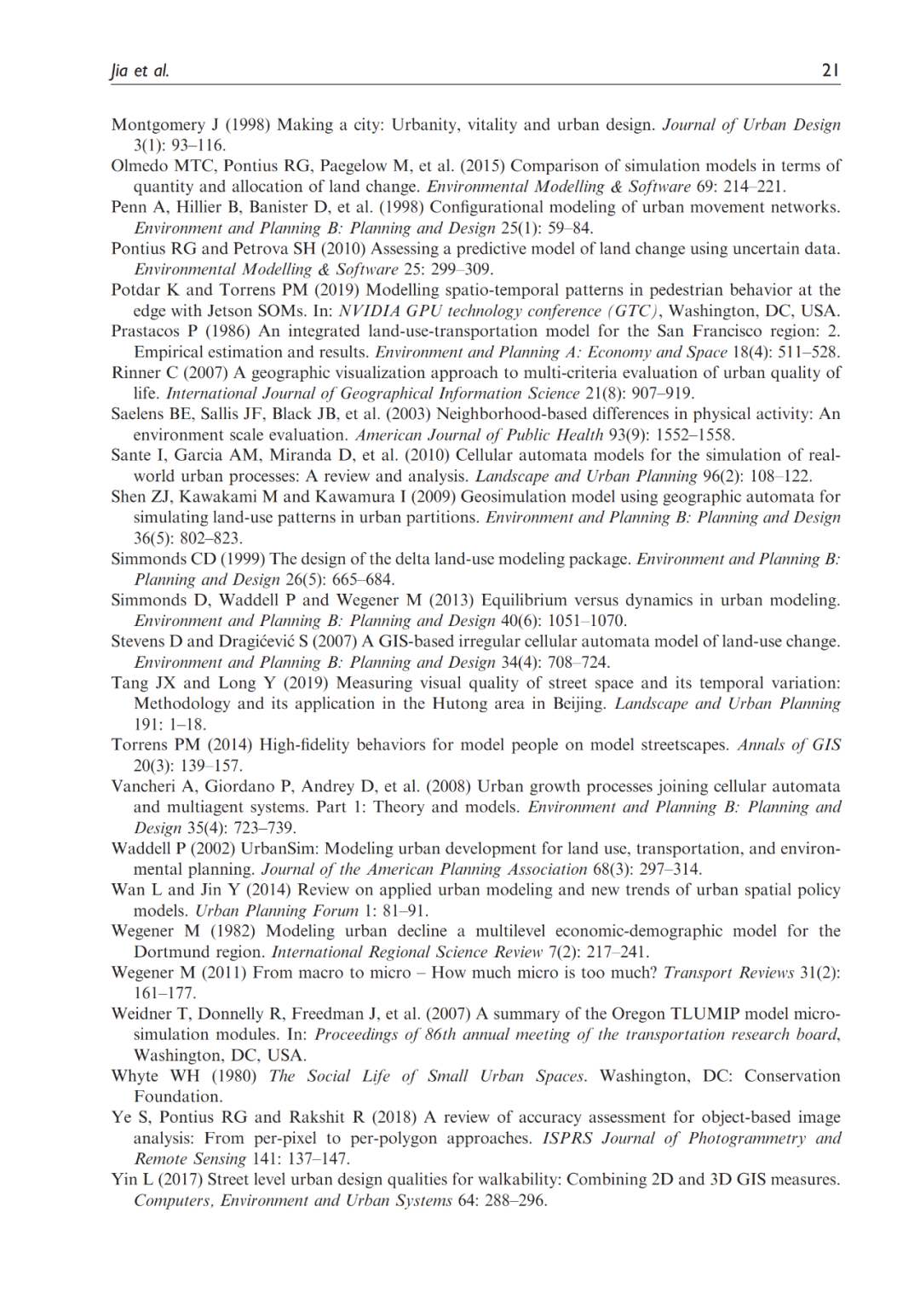
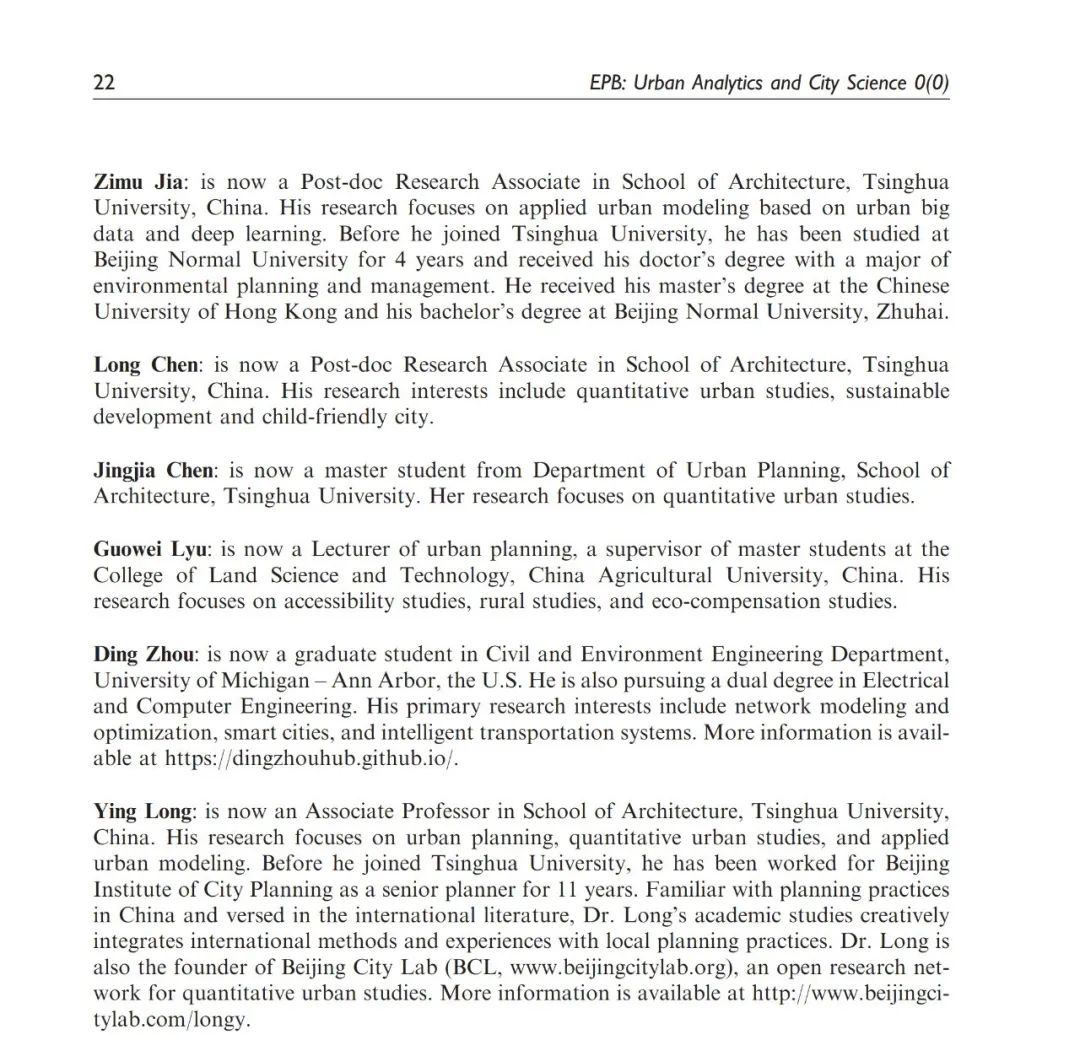
PS:以上为【北京城市实验室 Modeling Streets 单元】分享内容,具体内容可进入网站下载查看。
欢迎大家点击文末的“阅读原文”或复制搜索此链接:https://www.beijingcitylab.com/projects-1/52-modeling-streets/,关注北京城市实验室 Modeling Streets 单元深入探索。
更多内容,请点击微信下方菜单即可查询。
请搜索微信号“Beijingcitylab”关注。
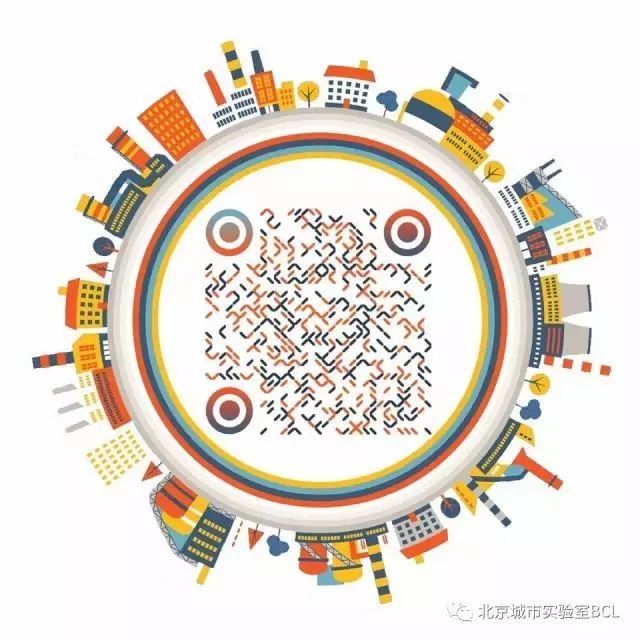
Email:BeijingCityLab@gmail.com
Emaillist: BCL@freelist.org
新浪微博:北京城市实验室BCL
微信号:beijingcitylab
网址: http://www.beijingcitylab.com
责任编辑:孟庆祥
原文始发于微信公众号(北京城市实验室BCL):论文推送 | 基于矢量元胞自动机的城市街道建模:框架及其在北京的应用
 规划问道
规划问道







